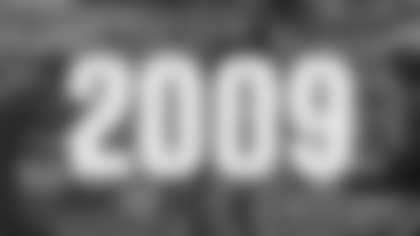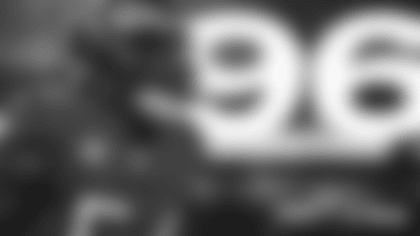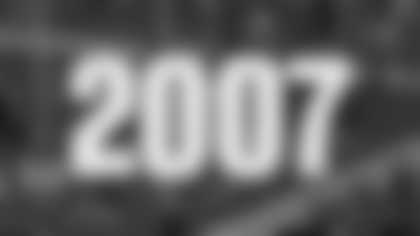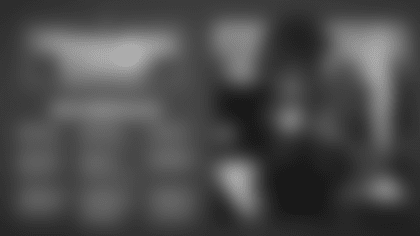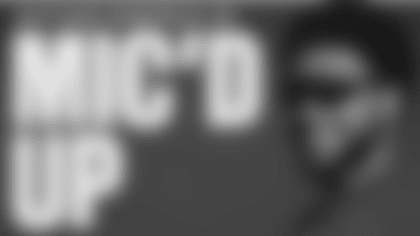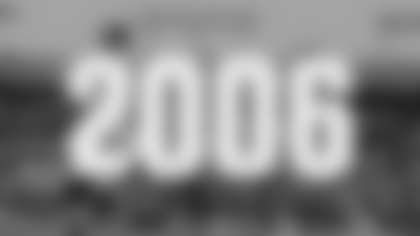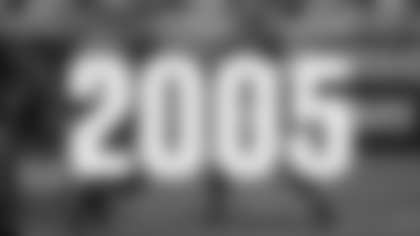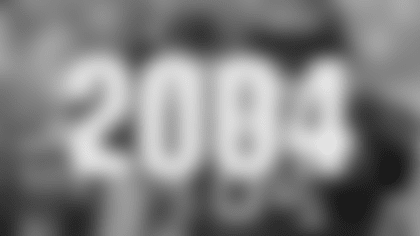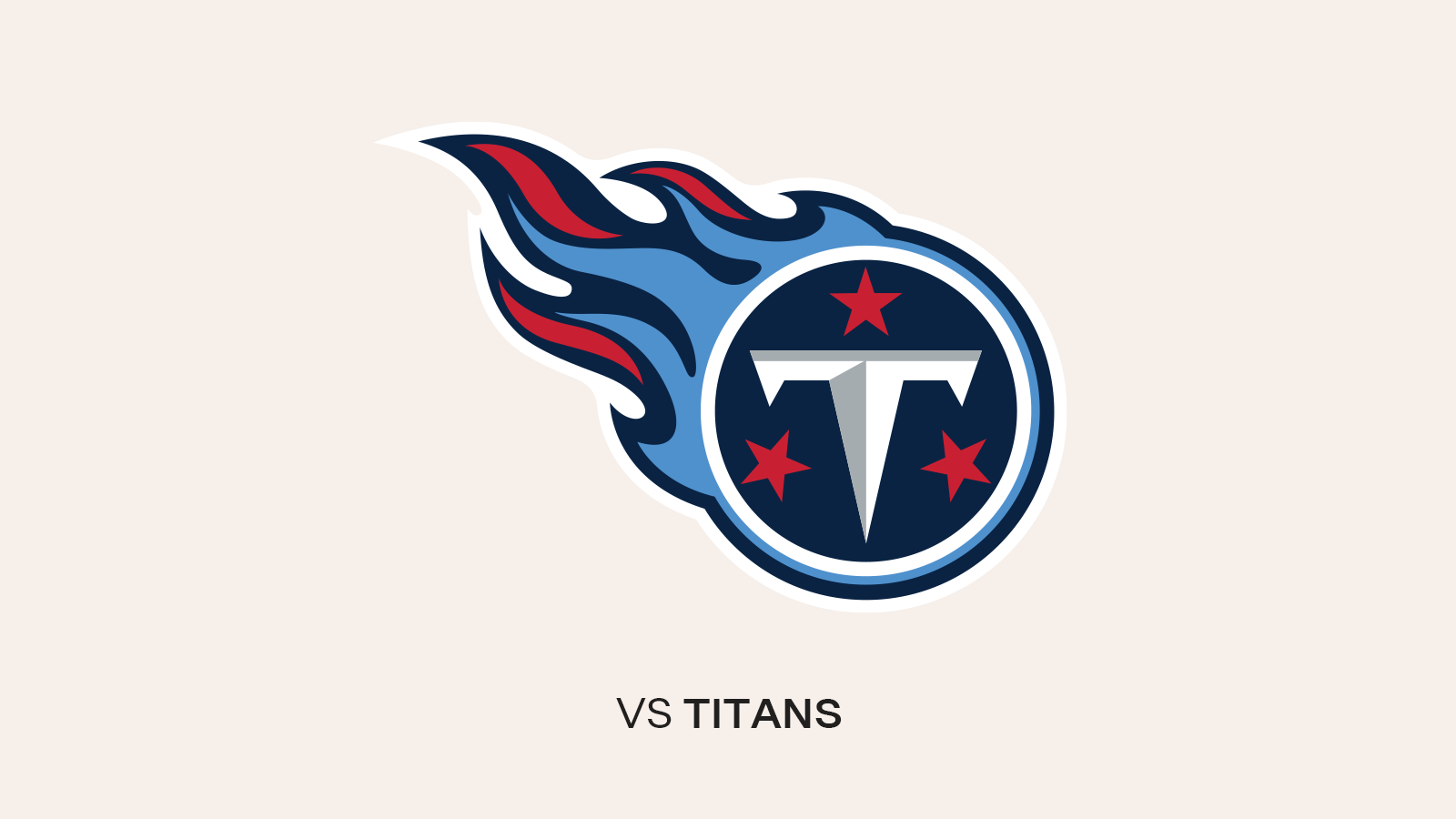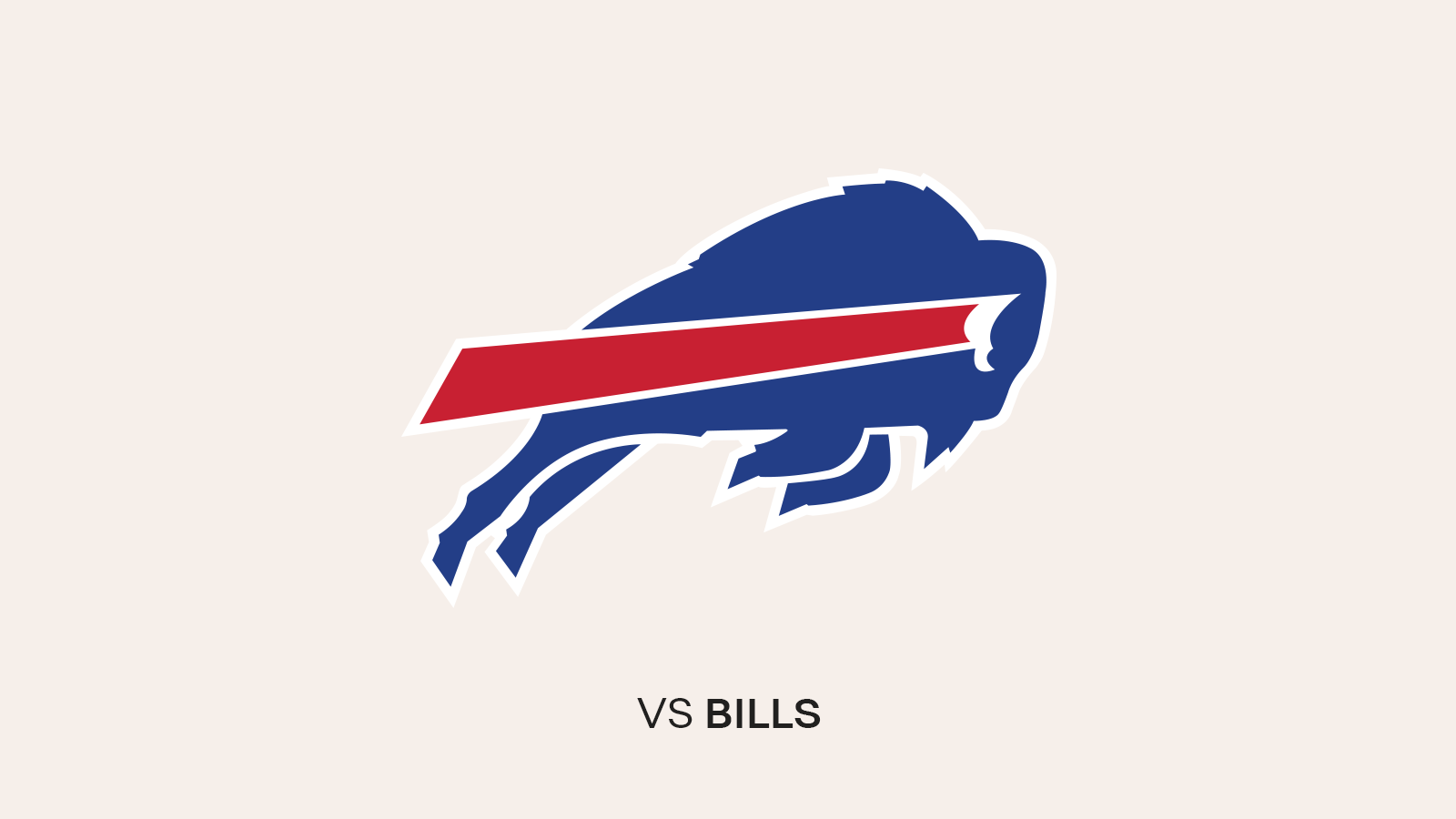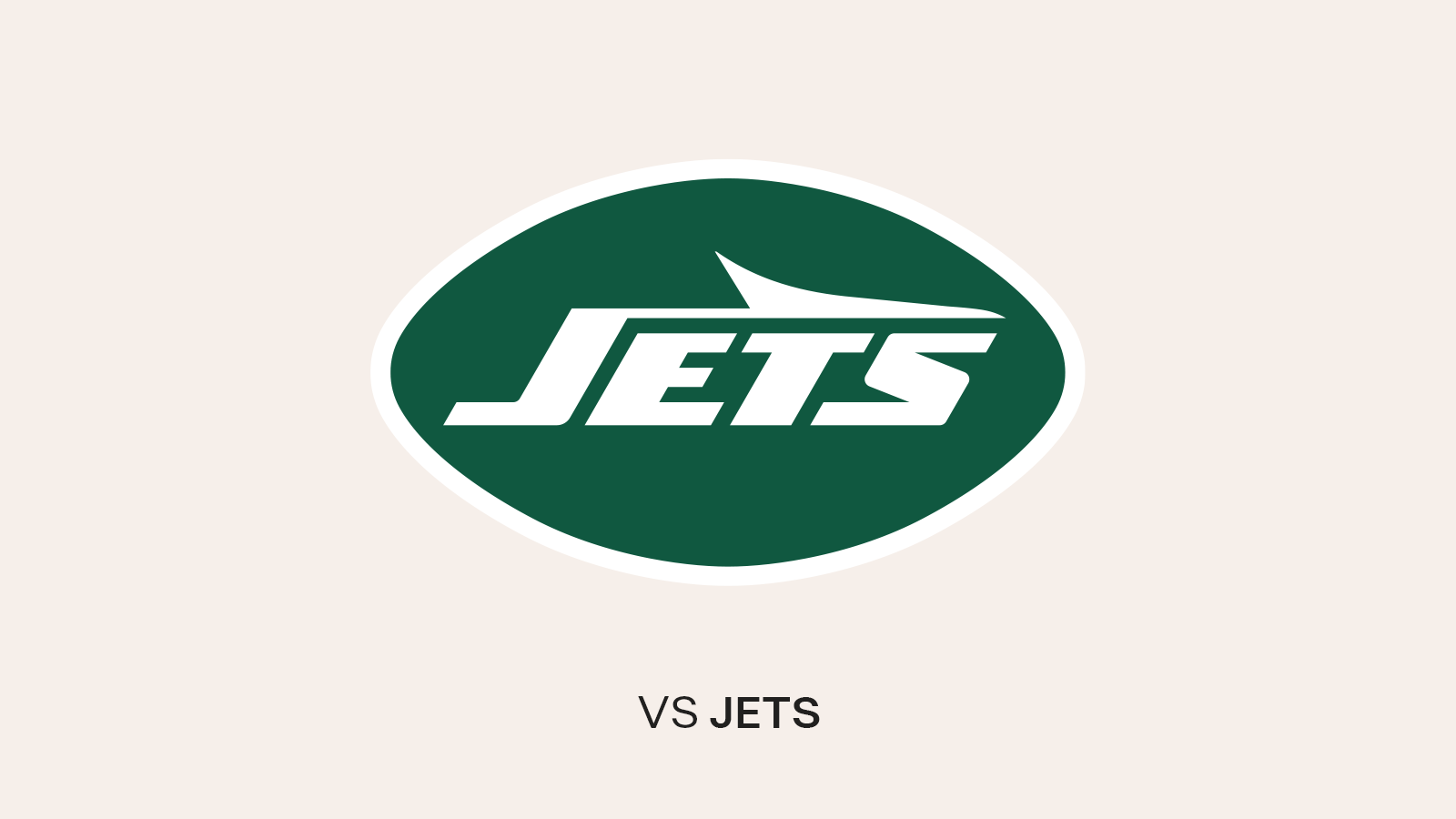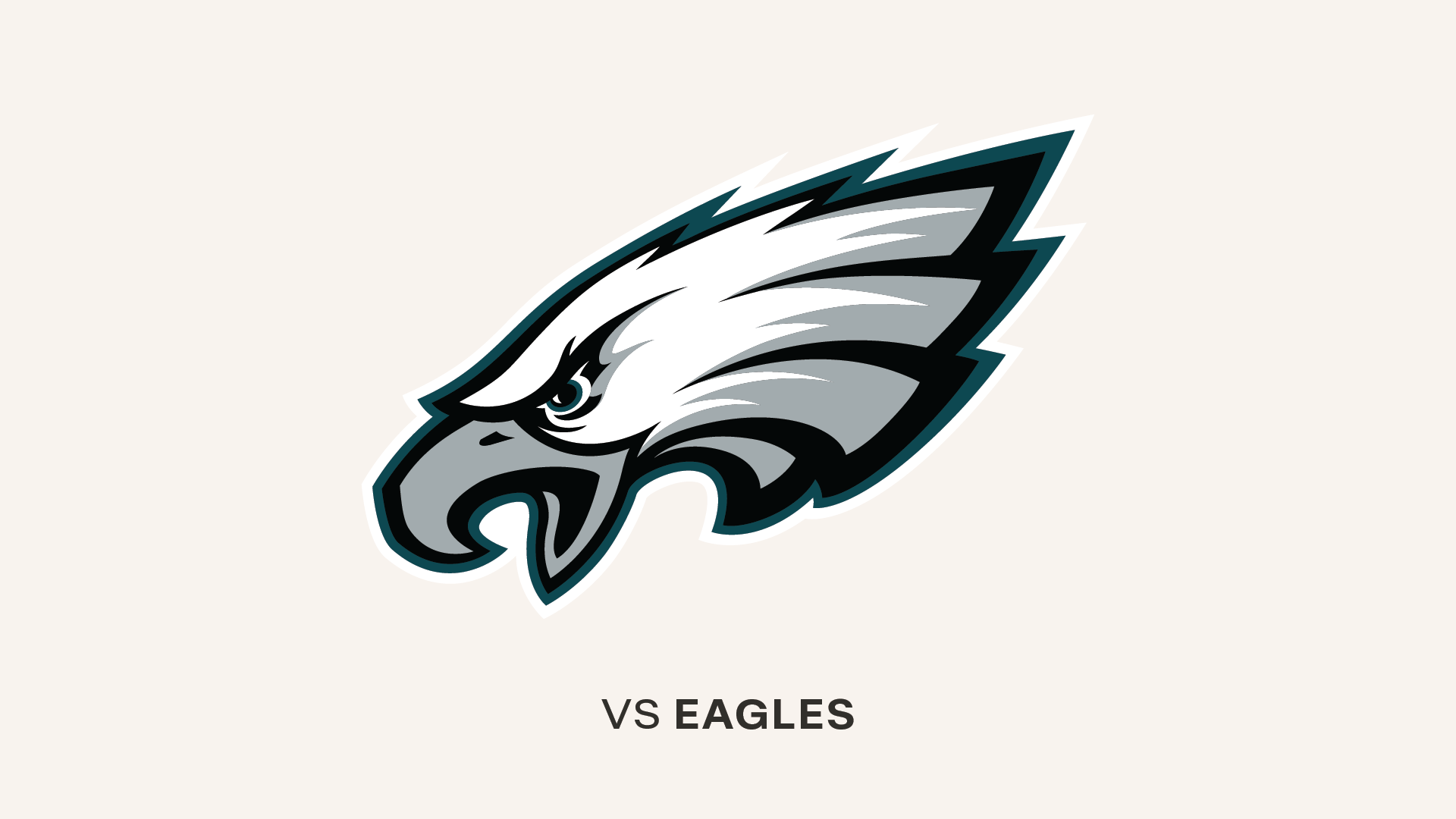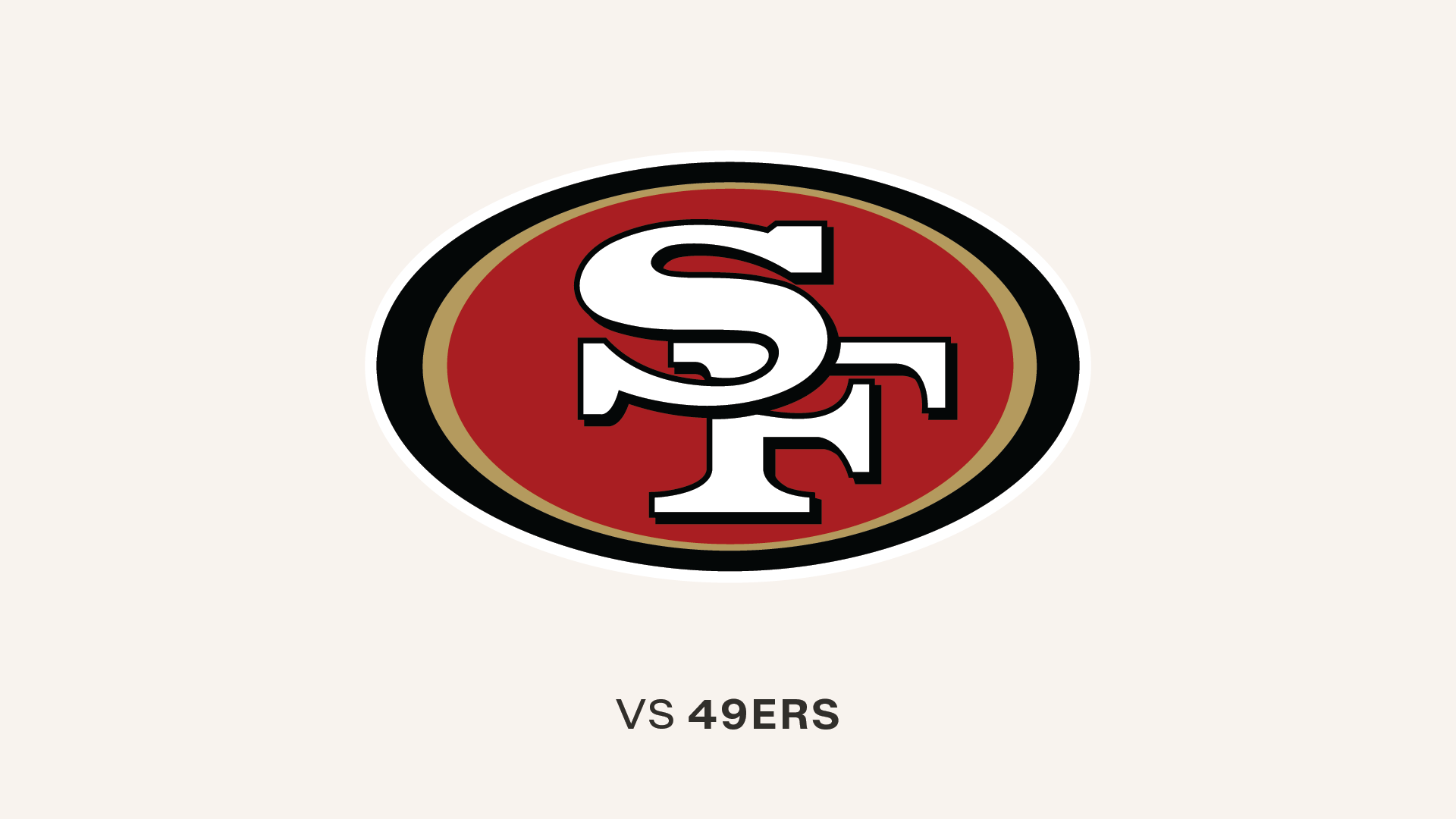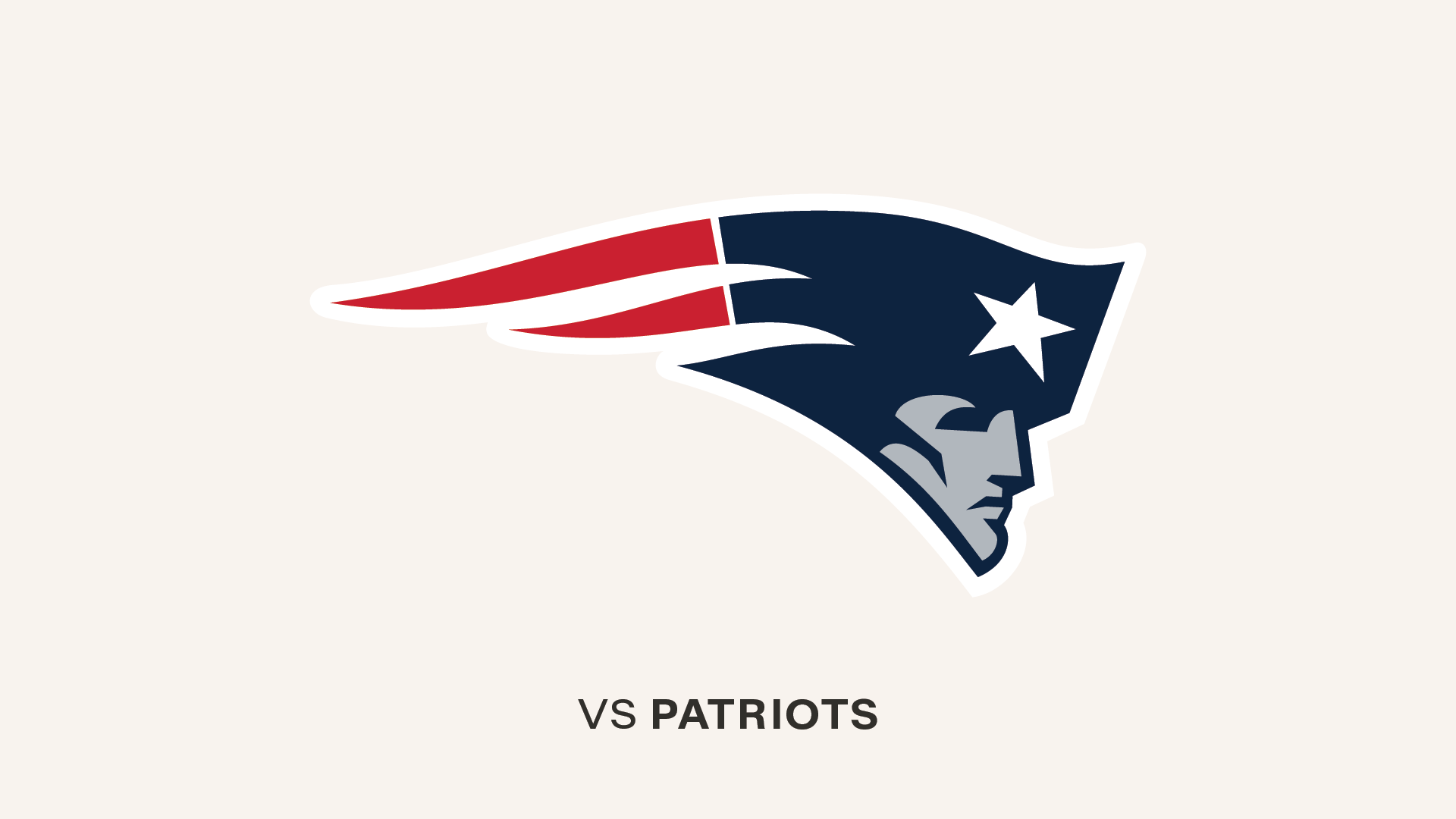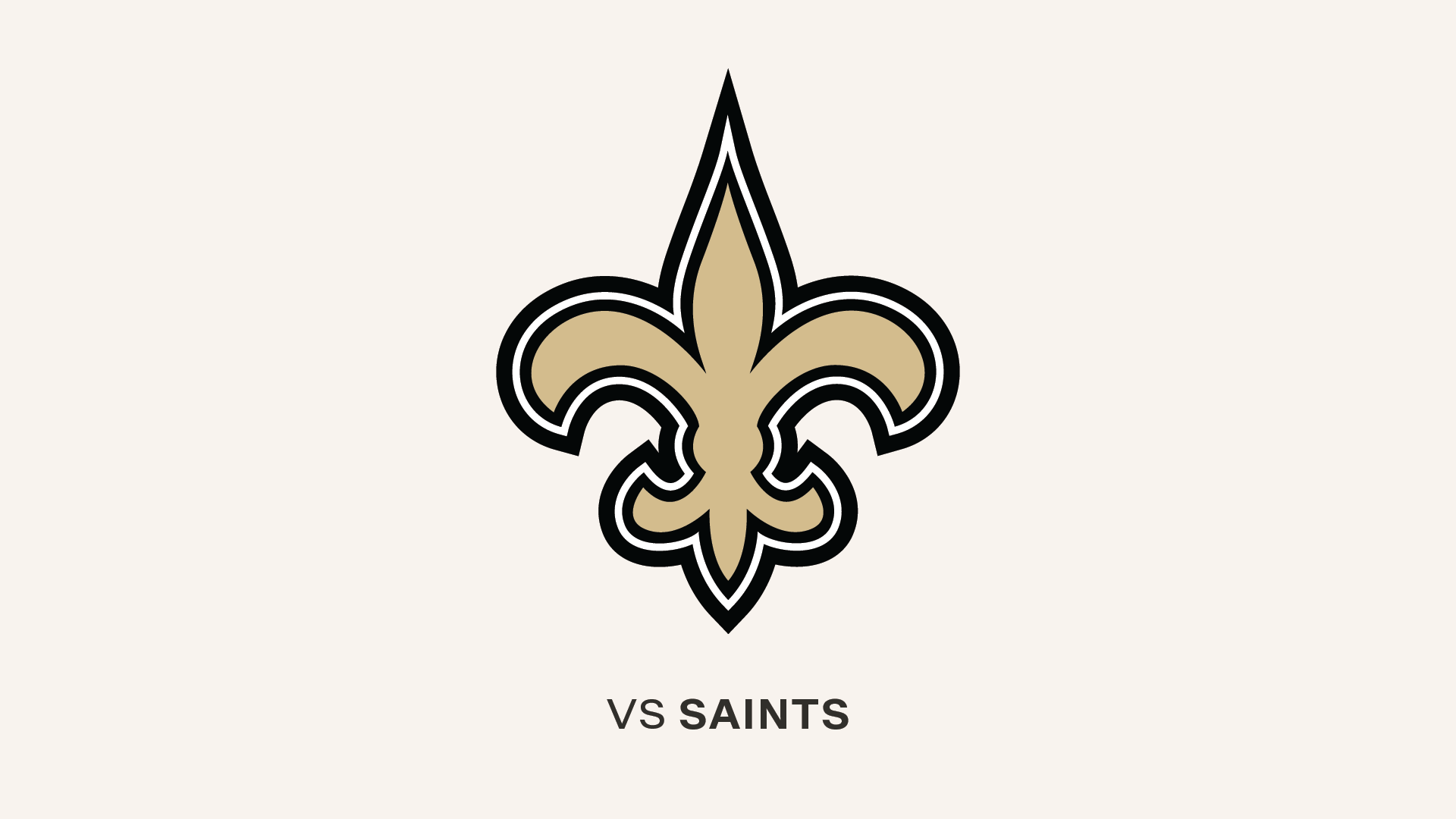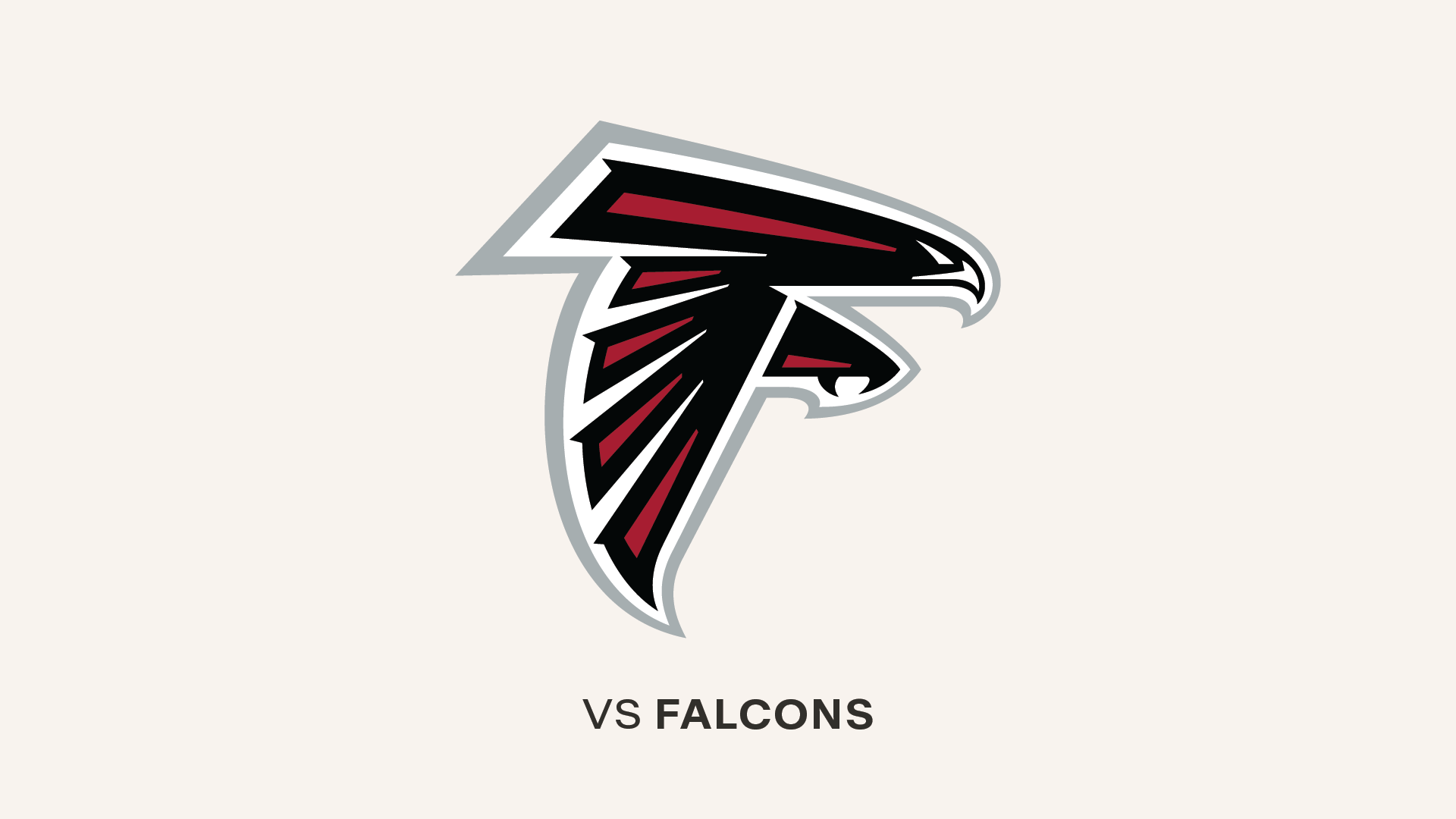A little over a week ago, I shared with you a trend I had noticed among NFL analysts in their many, many mock drafts. Following the Tampa Bay Buccaneers' monumental signing of Tom Brady and their successful bid to bring back such key front-seven pieces as Shaq Barrett, Jason Pierre-Paul and Ndamukong Suh, those analysts were starting to agree with each other. In 24 mock drafts surveyed between March 17-26, 15 gave the Buccaneers an offensive tackle at pick number 14.
That was 62.5% of the mock drafts I recorded in that span, and the trend has only grown stronger. I've added 20 more mocks to the list since March 27 and 17 of them have paired the Buccaneers with an offensive tackle. The prevailing sense is that Tampa Bay's biggest need is a ready-to-start right tackle to help protect the aforementioned Tom Brady.
Recently, a sub-trend has developed within the rush to pair the Bucs with a tackle. In the last seven days, I've found three mock drafts that required the Buccaneers to trade up in order to get one of the four tackles widely considered to be in the top tier at the position. This is not a wild idea. As I noted in the article linked above, in every one of the mock drafts surveyed in which the Bucs took one of those four players – Louisville's Mekhi Becton, Georgia's Andrew Thomas, Alabama's Jedrick Wills or Iowa's Tristan Wirfs – they were getting the fourth one off the board. Several other mock drafts had Tampa Bay taking the fifth or sixth tackle after those four were already gone before pick 14.
In other words, it's a tight situation for the Buccaneers if they do indeed want one of those four players and if the prevailing opinions are correct. Which is why SI.com's Kevin Hanson, CBS Sports' Chris Trapasso and CBS Sports' Ryan Wilson all projected a trade up for the Buccaneers.
Let's look at what it might cost if the Bucs were to attempt to move up into the top 10 of this year's draft in order to get their new offensive tackle.
First, we have the proposed trades of those three analysts:
· To move up from #14 to #9 in Hanson's draft (trading with the Jaguars), the Buccaneers gave up their third-round pick (#76) and another third-rounder in the 2021 draft.
· To move up from #14 to #7 (Panthers) in Trapasso's projection, the Buccaneers gave up their second-round pick (#45), their sixth-round pick (#194) and a second-round pick in 201.
· To make the same deal as in Trapasso's mock draft, Wilson has the Buccaneers giving up just their second-round pick (#45).
Would any of these proposals be feasible? According to the widely-used "Jimmy Johnson" draft value chart, Wilson's deal to get the Buccaneers from 14 up to seven is pretty close to dead on. There is a 400-point difference on the chart between the seventh and 14th picks, and the Bucs' #45 selection in Round Two is worth 450 points. The Stuart Chase draft value chart has it as a bit of an overpay by the Buccaneers, but not by much.
As the NFL Draft inches closer, a look at NFL Network Maurice Jones-Drew's 2020 mock draft. Photos by AP Images.
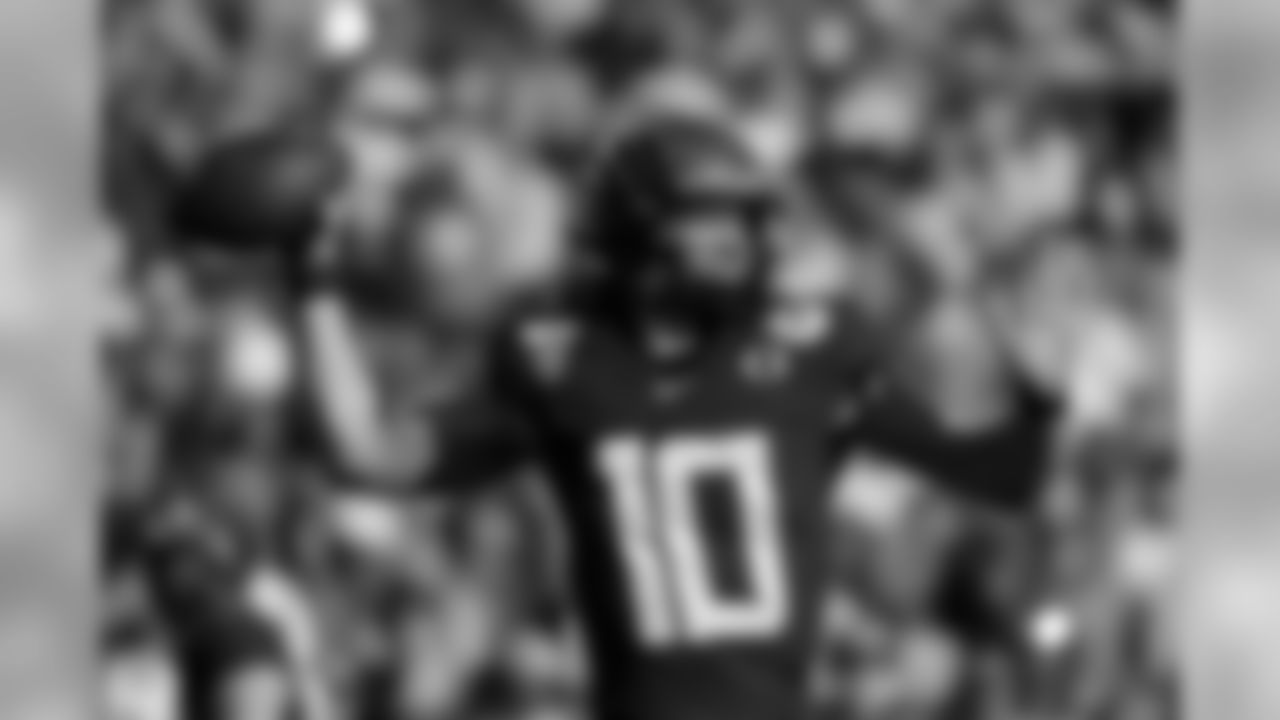
(1) QB Justin Herbert - Bengals
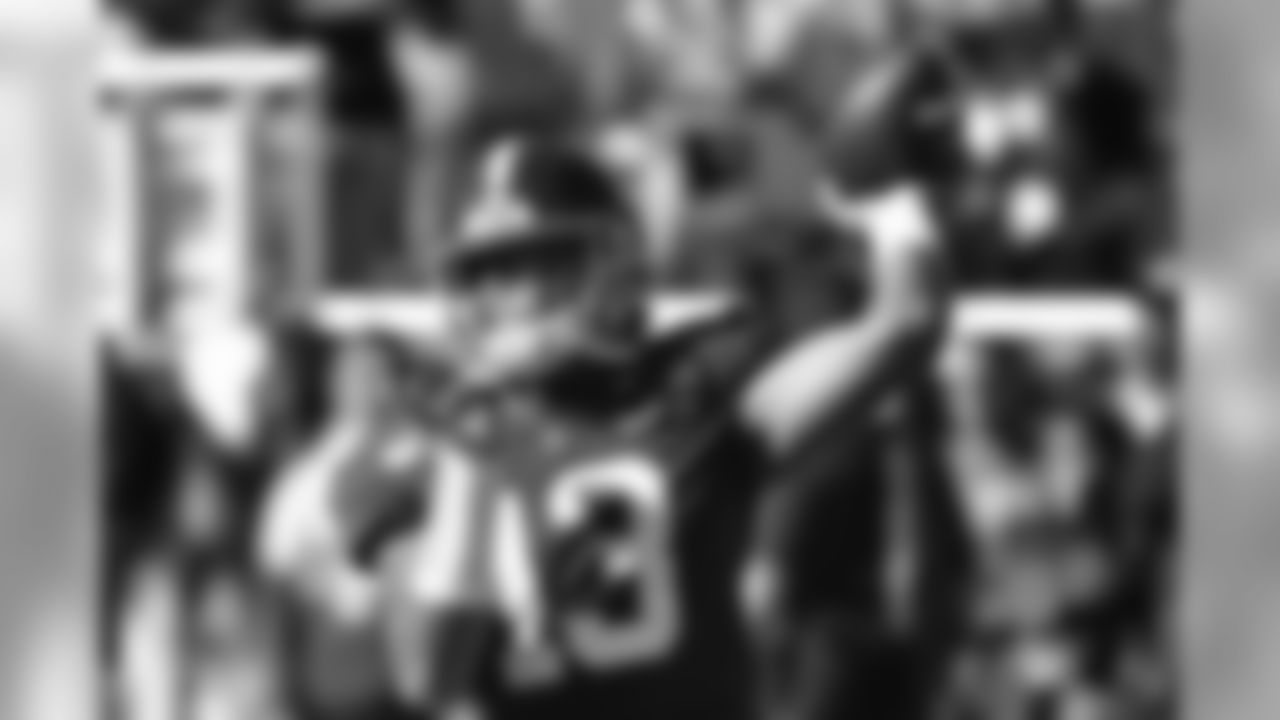
(2) QB Tua Tagovailoa - Chargers
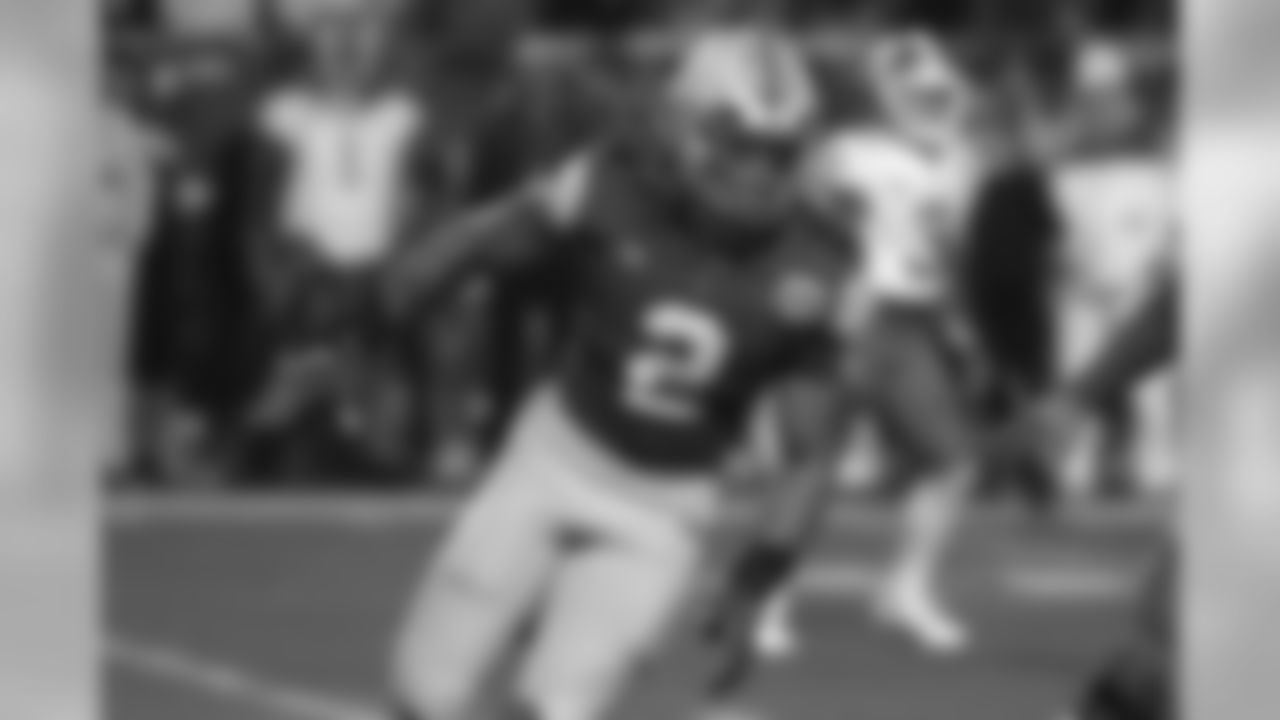
(3) E Chase Young - Giants

(4) DT Derrick Brown - Lions
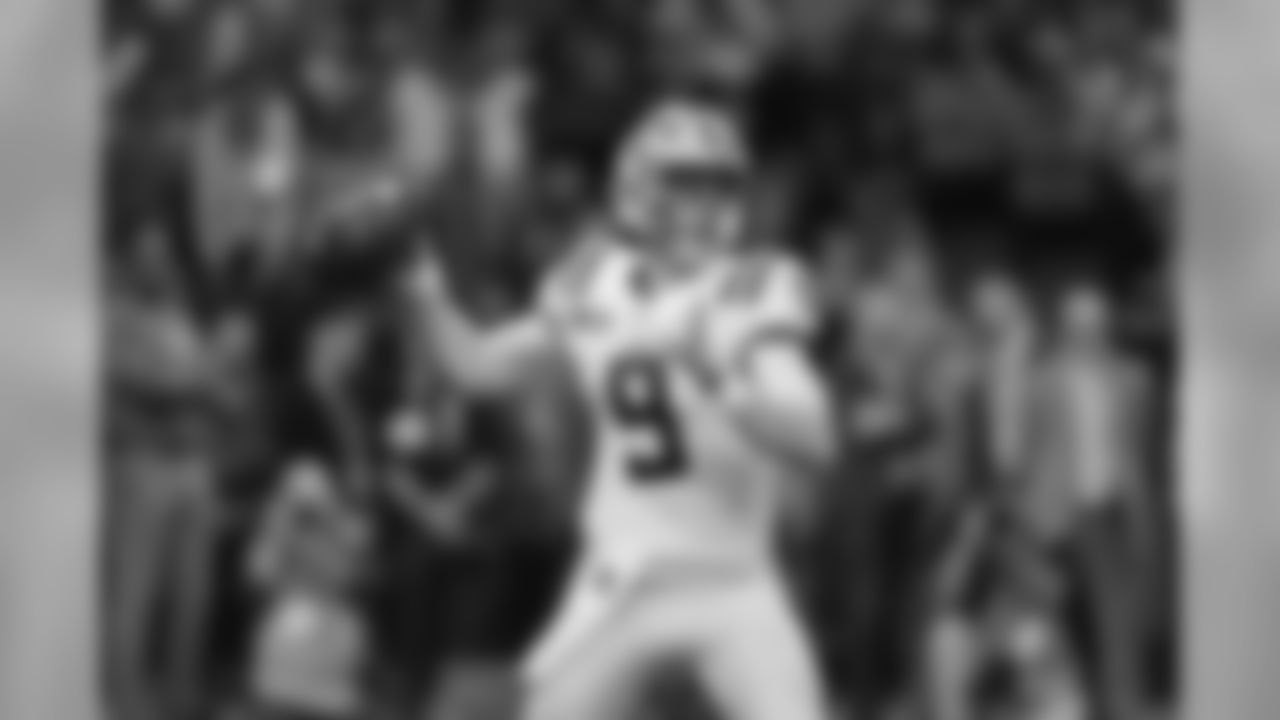
(5) QB Joe Burrow - Dolphins
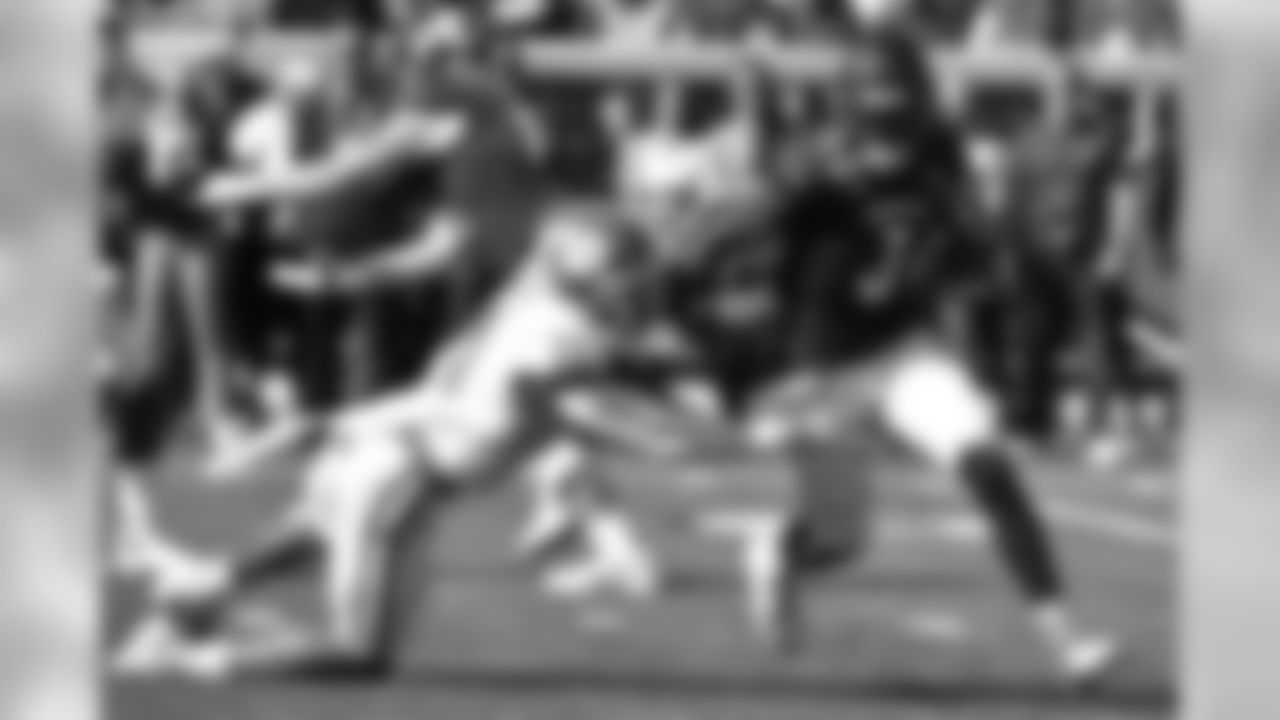
(6) S Isaiah Simmons - Redskins
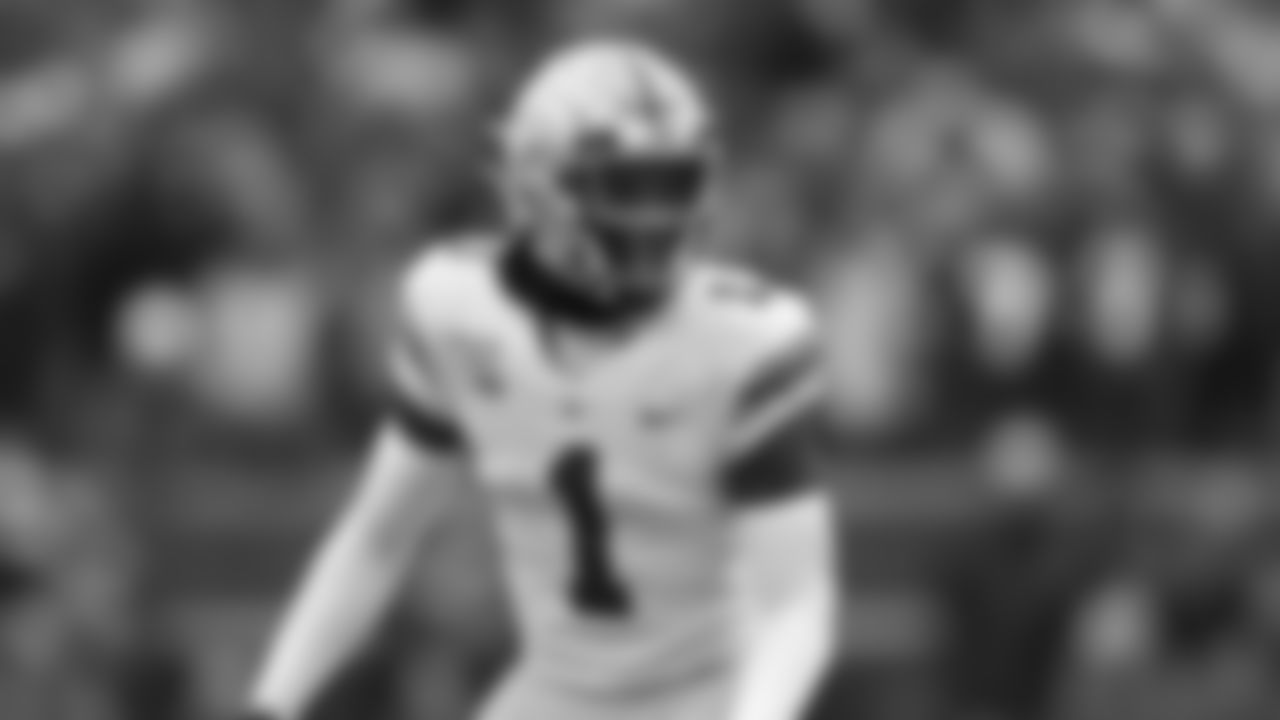
(7) CB Jeff Okudah - Jaguars
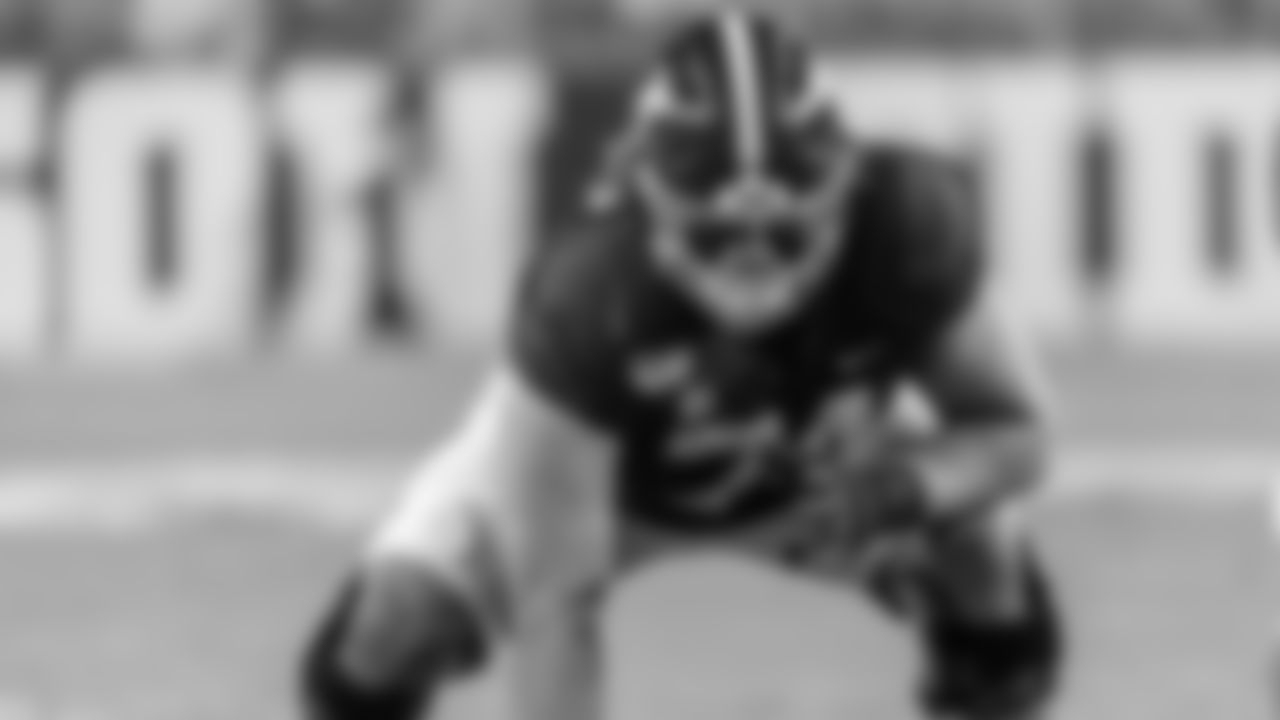
(8) OT Jedrick Wills - Cardinals

(9) DT Javon Kinlaw - Panthers
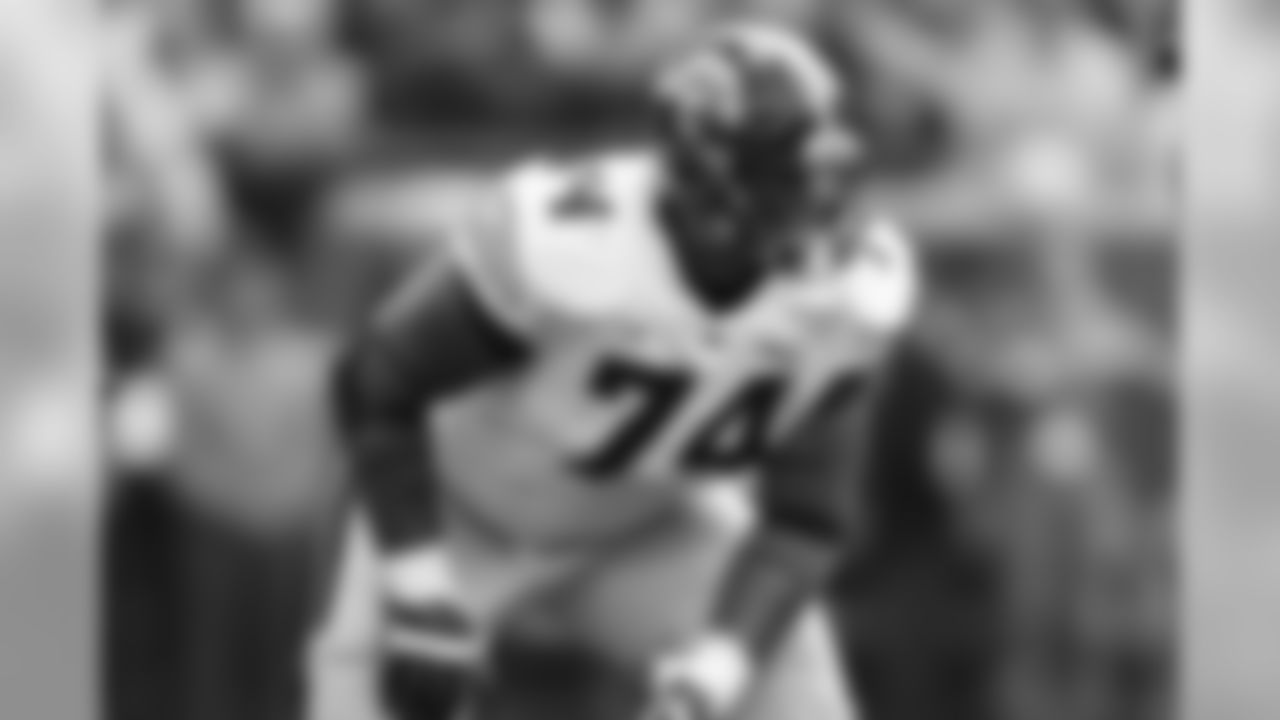
(10) OT Tristan Wirfs - Browns
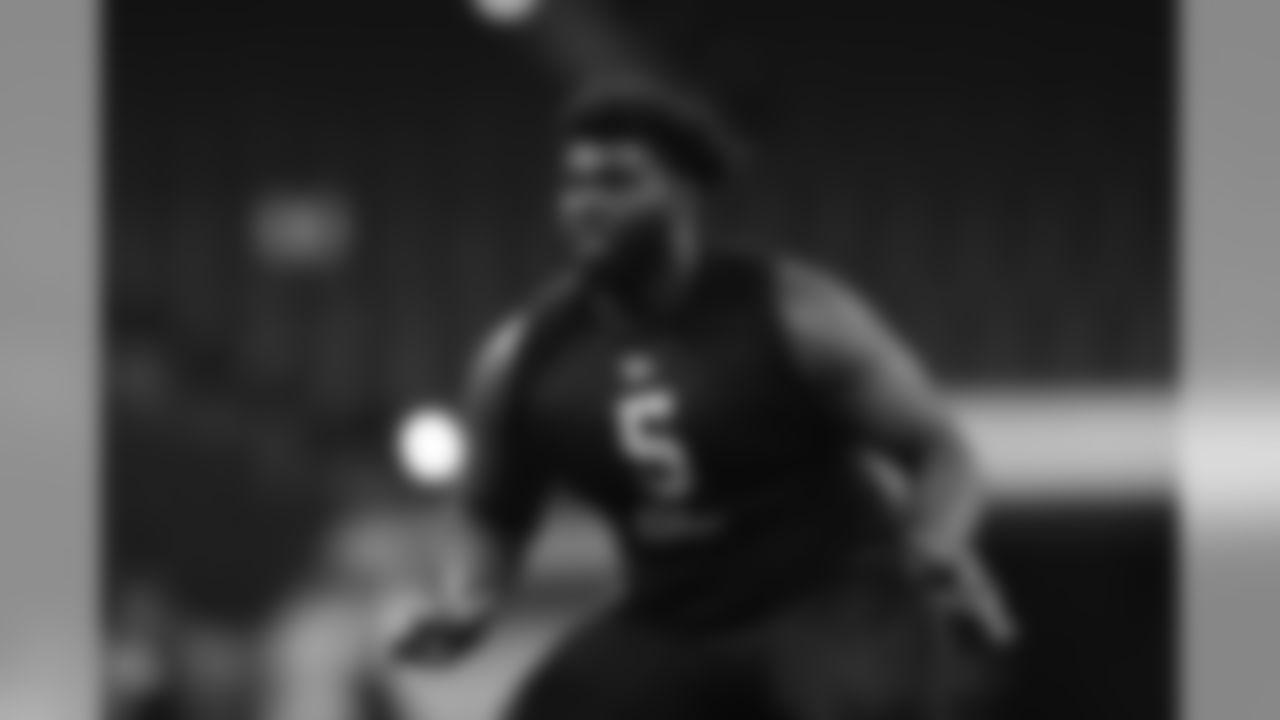
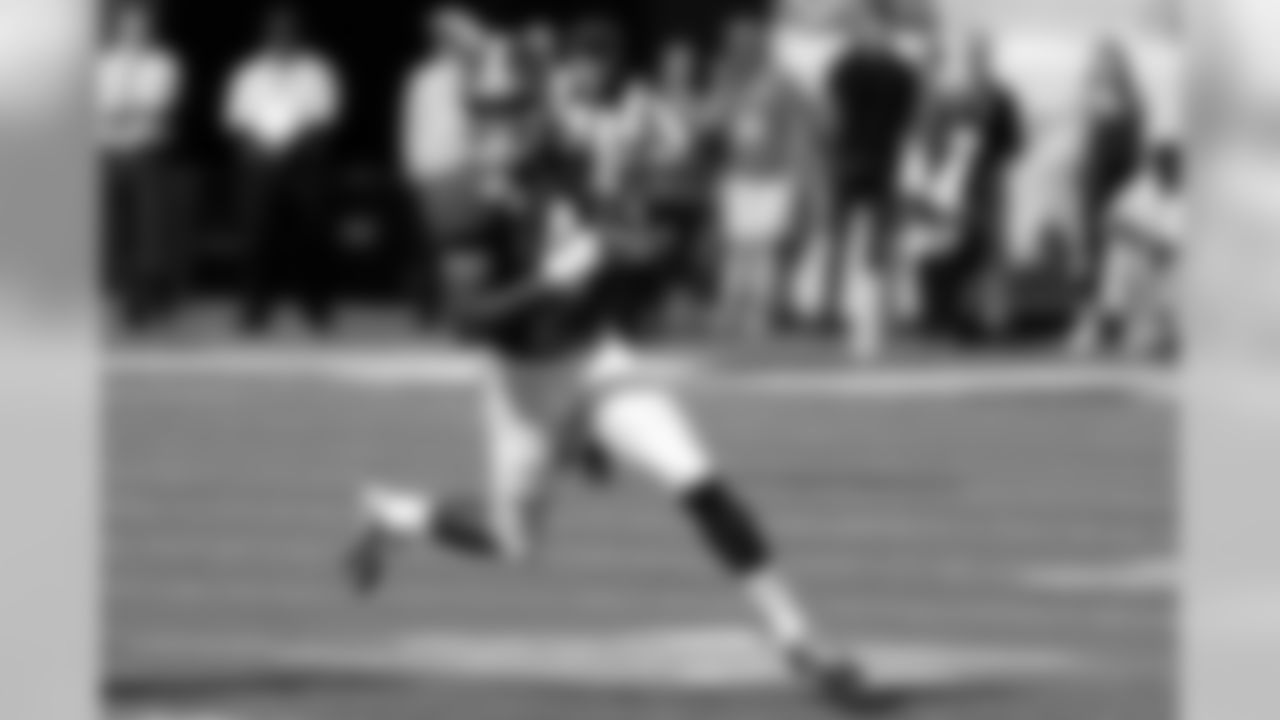
(12) WR Jerry Jeudy - Raiders
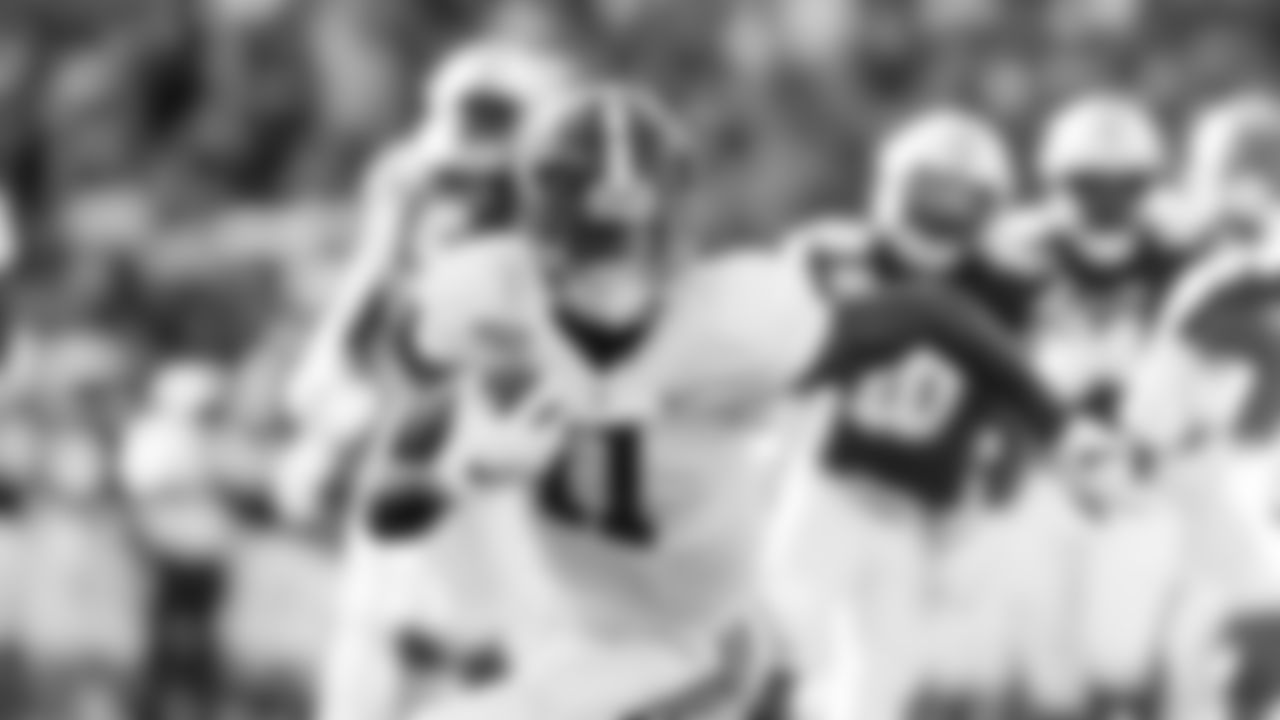
(13) WR Henry Ruggs III - 49ers
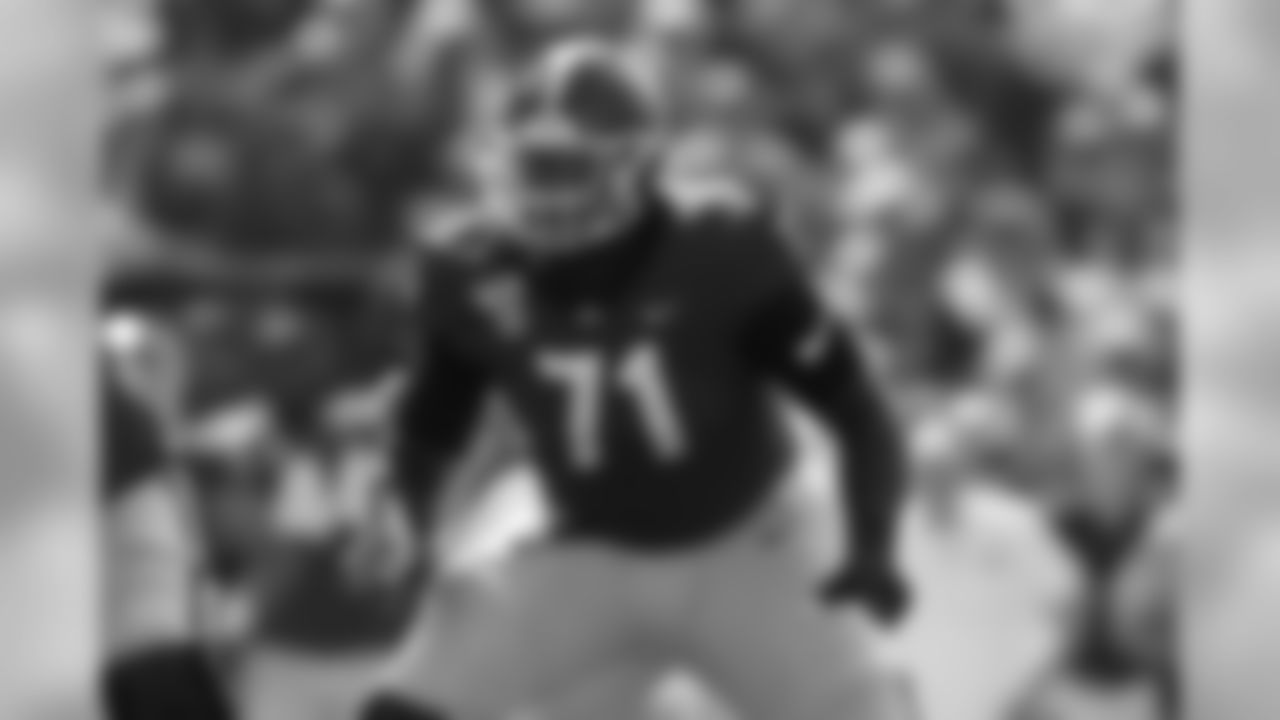
(14) OT Andrew Thomas - Buccaneers
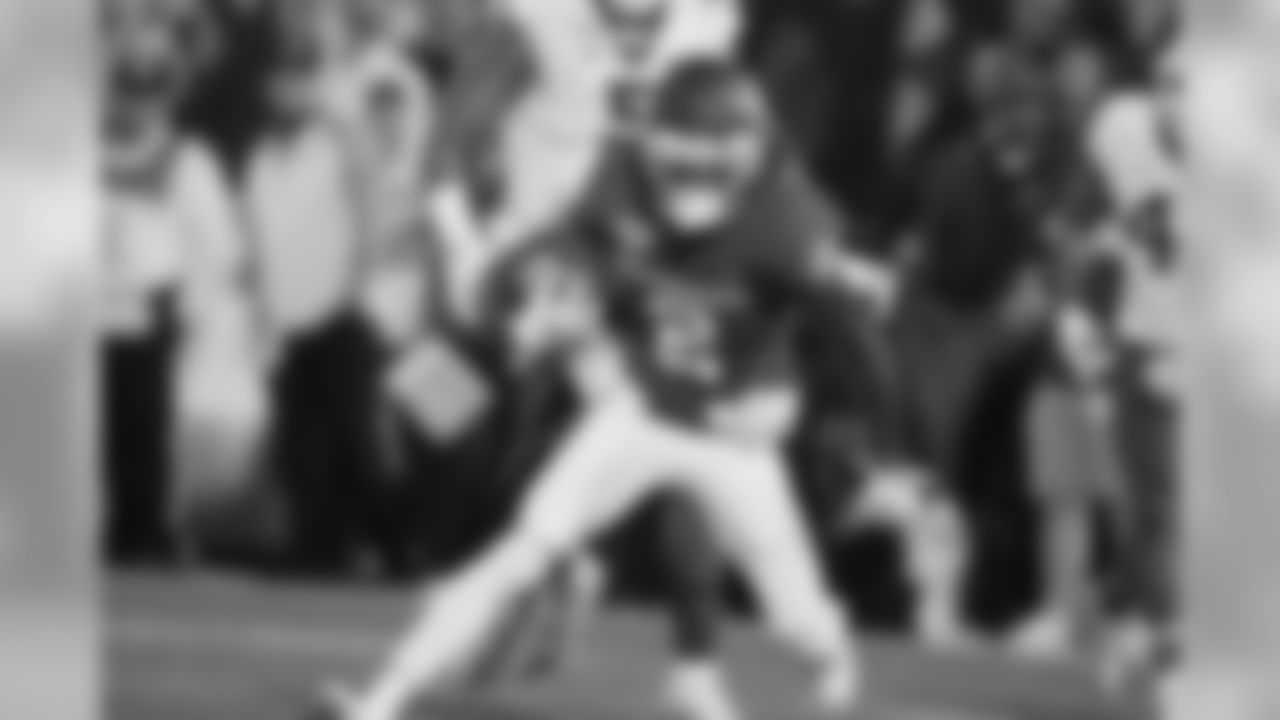
(15) WR CeeDee Lamb - Broncos
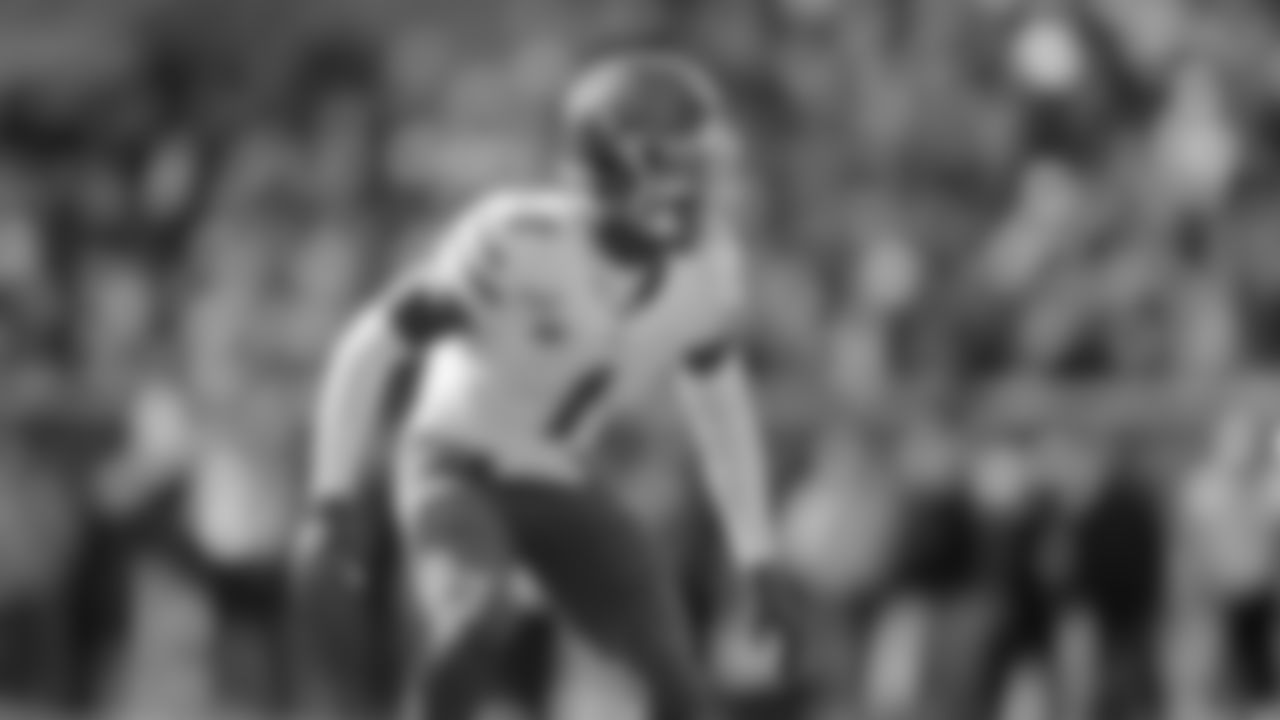
(16) CB C.J. Henderson - Falcons
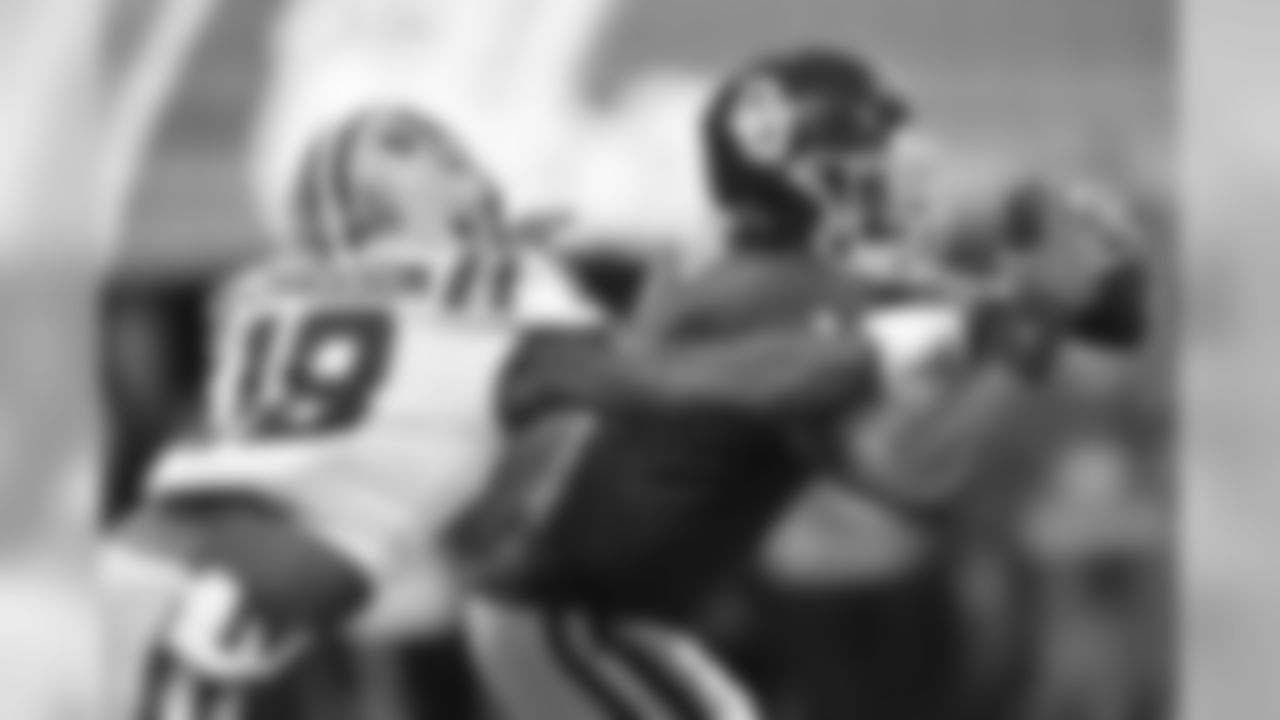
(17) LB K'Lavon Chaisson - Cowboys

(18) OT Austin Jackson - Dolphins
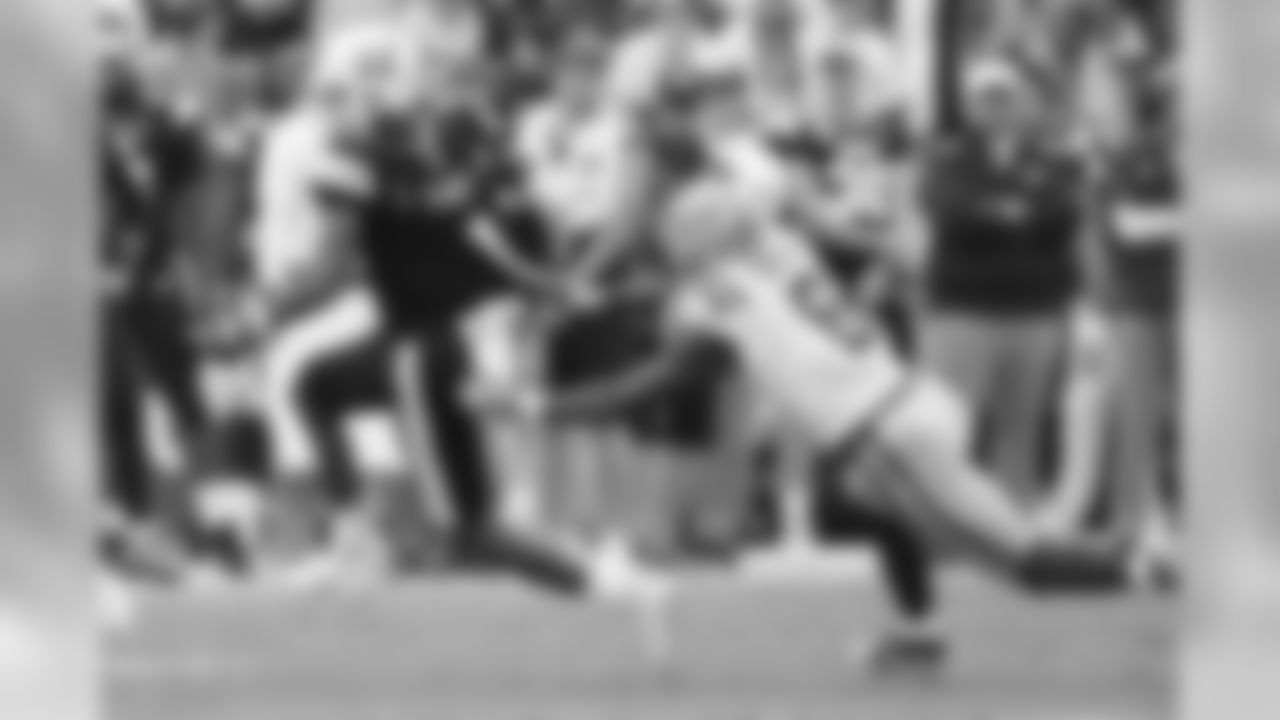
(19) LB Patrick Queen - Raiders
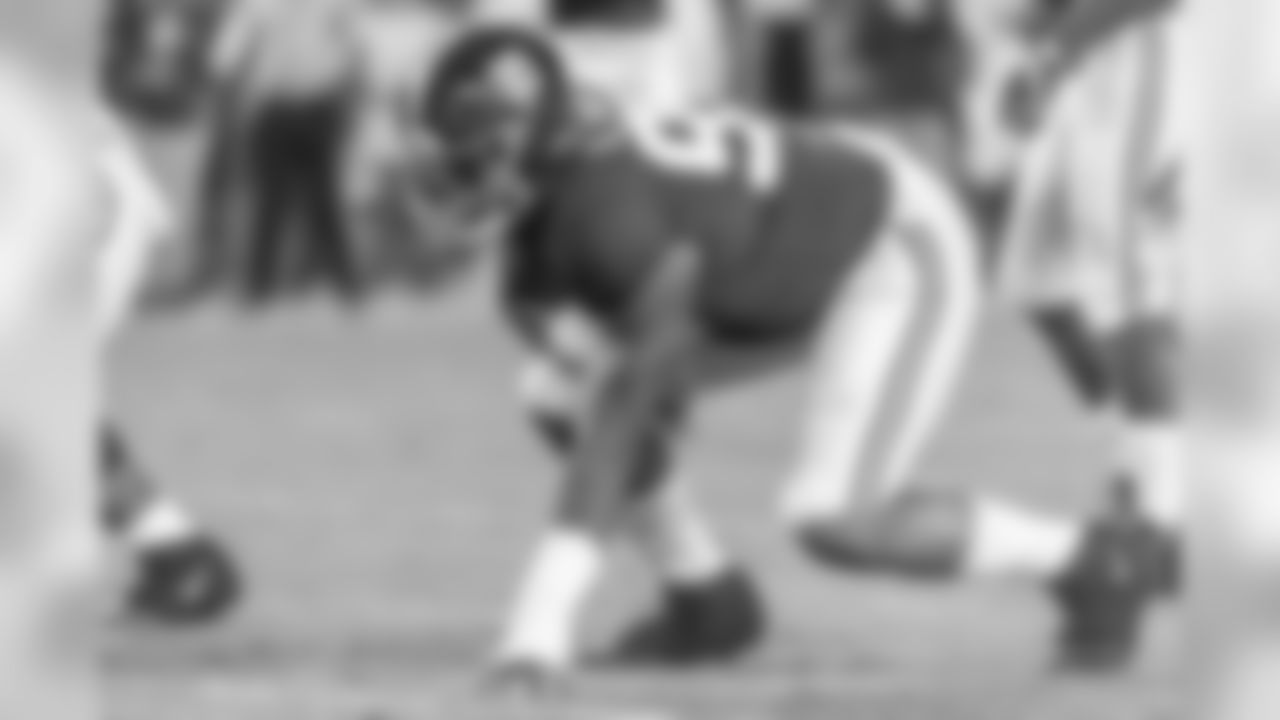
(20) DT Raekwon Davis - Jaguars
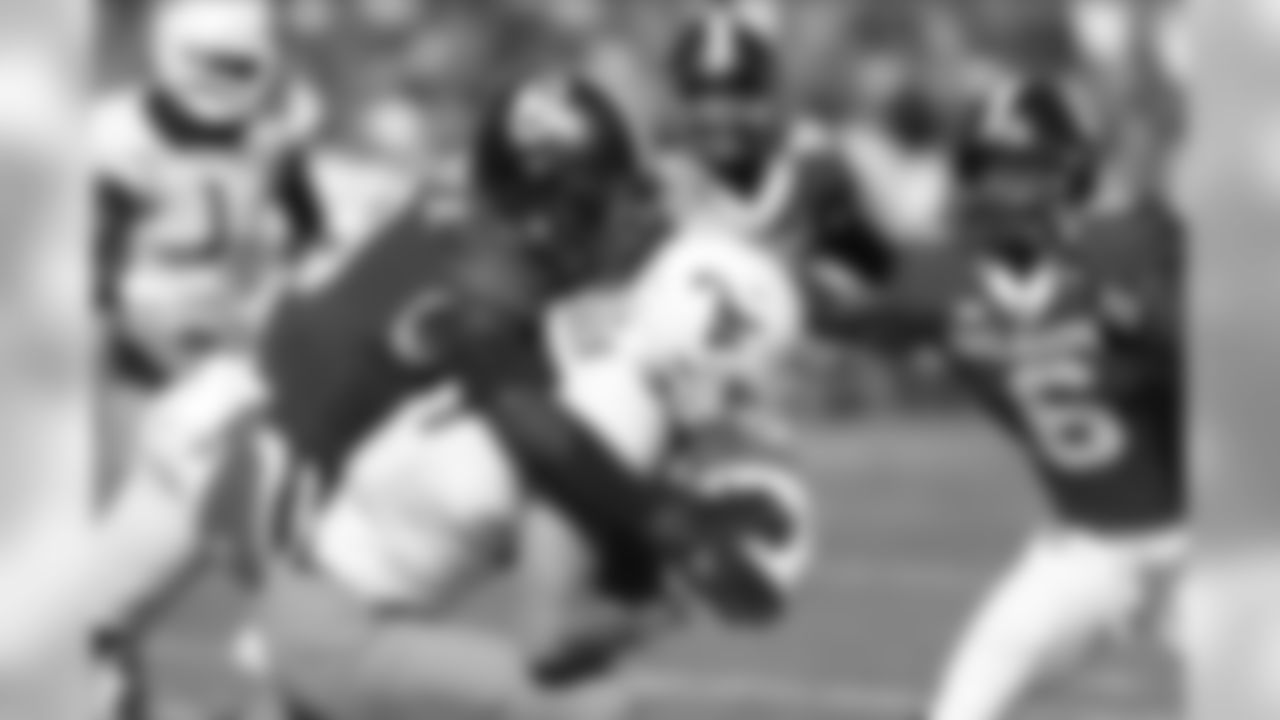
(21) LB Kenneth Murray - Eagles
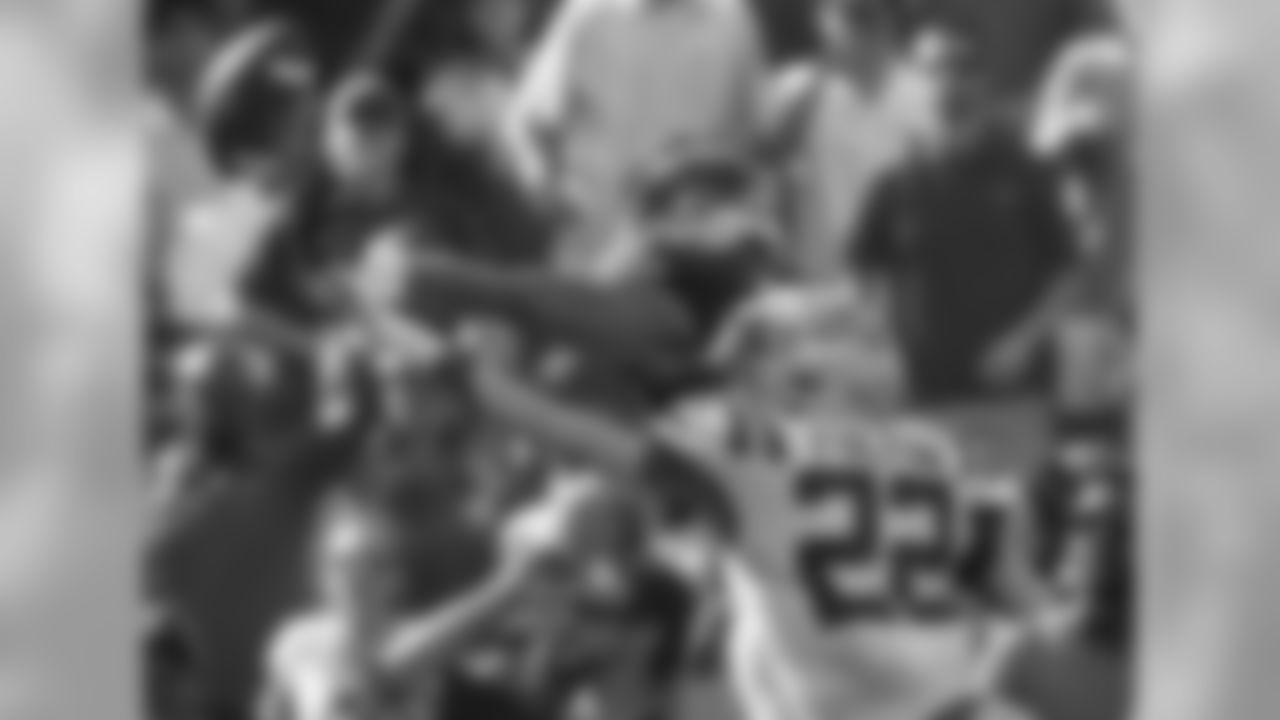
(22) CB Kristian Fulton - Vikings

(23) QB Jalen Hurts - Patriots
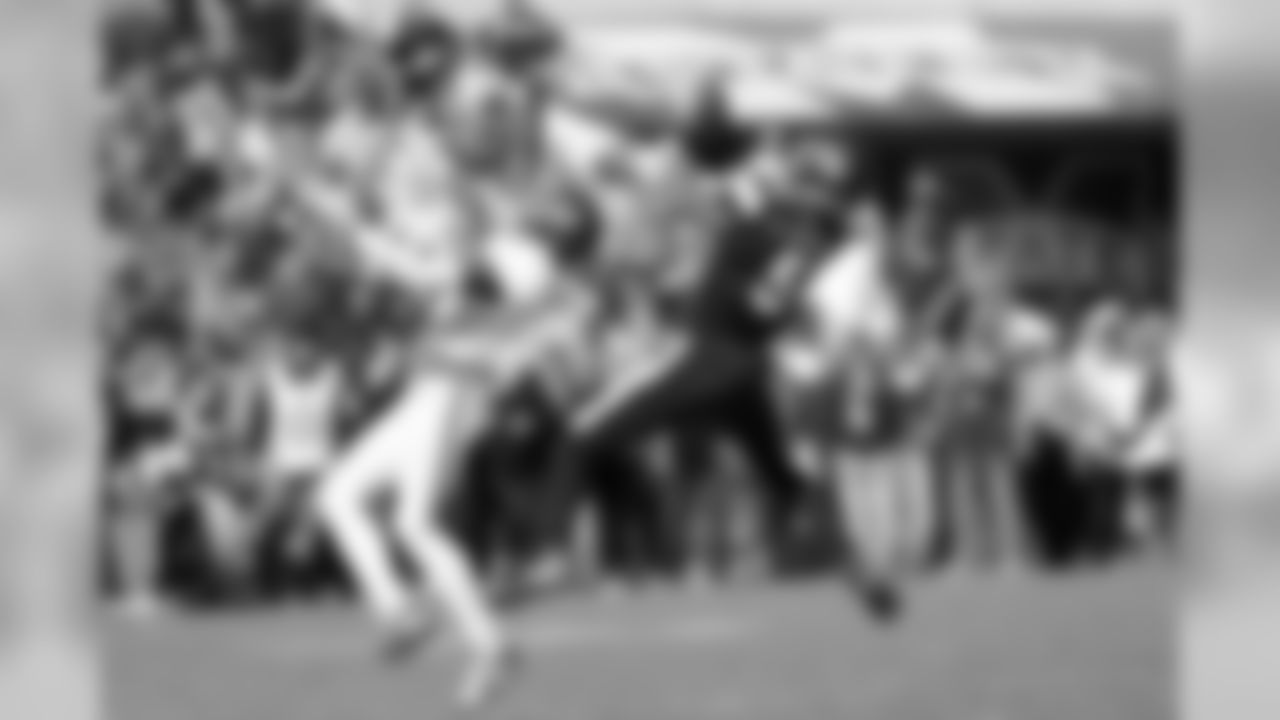
(24) CB Trevon Diggs - Saints
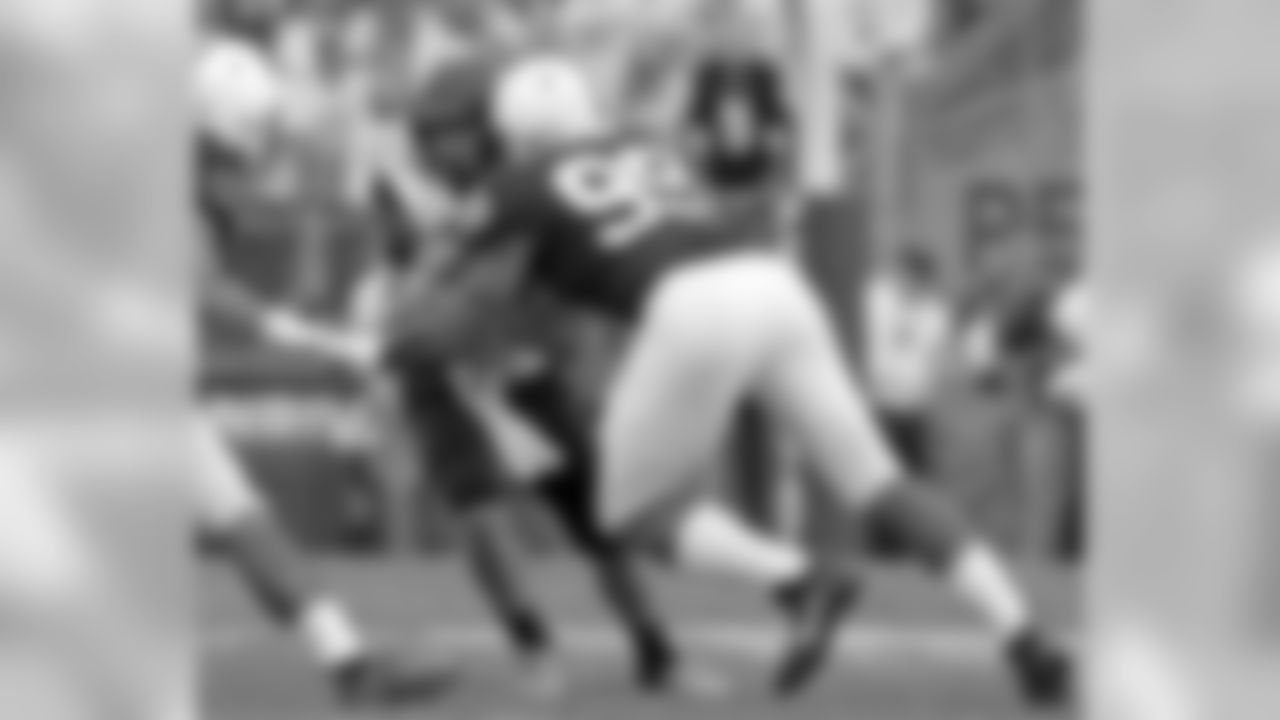
(25) E Yetur Gross-Matos - Vikings
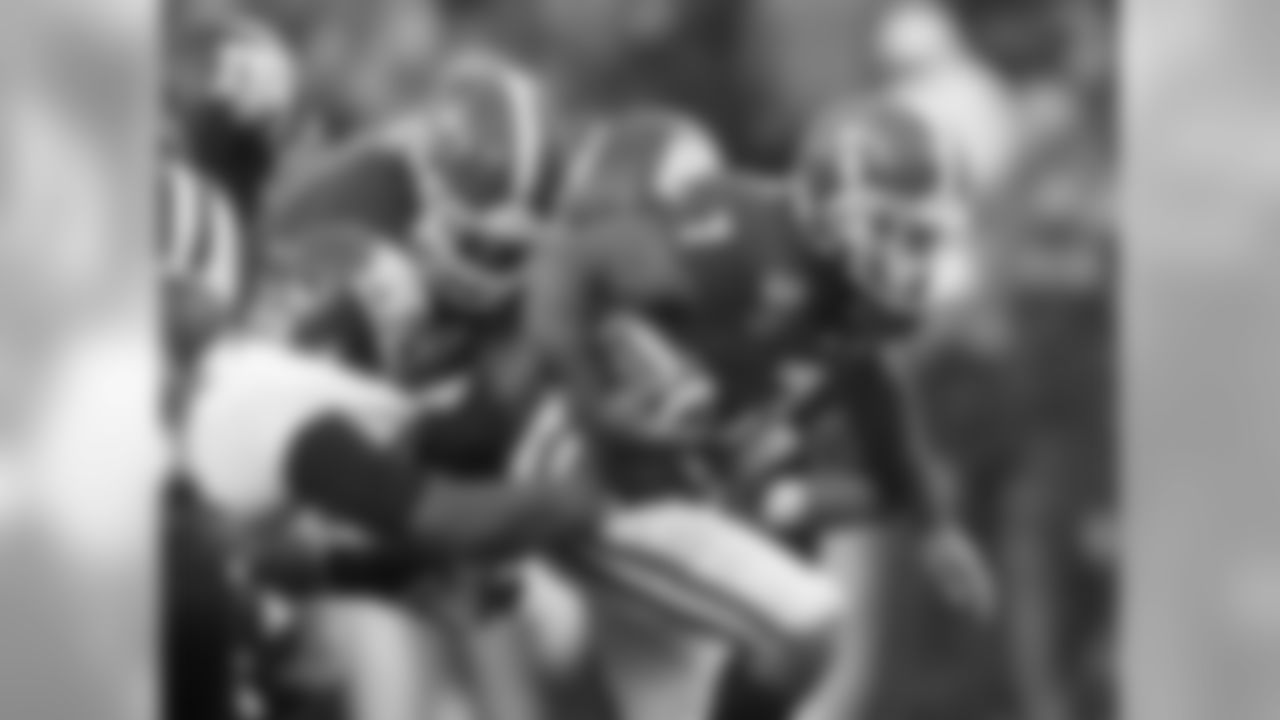
(26) RB D'Andre Swift - Dolphins

(27) OL Joshua Jones - Seahawks
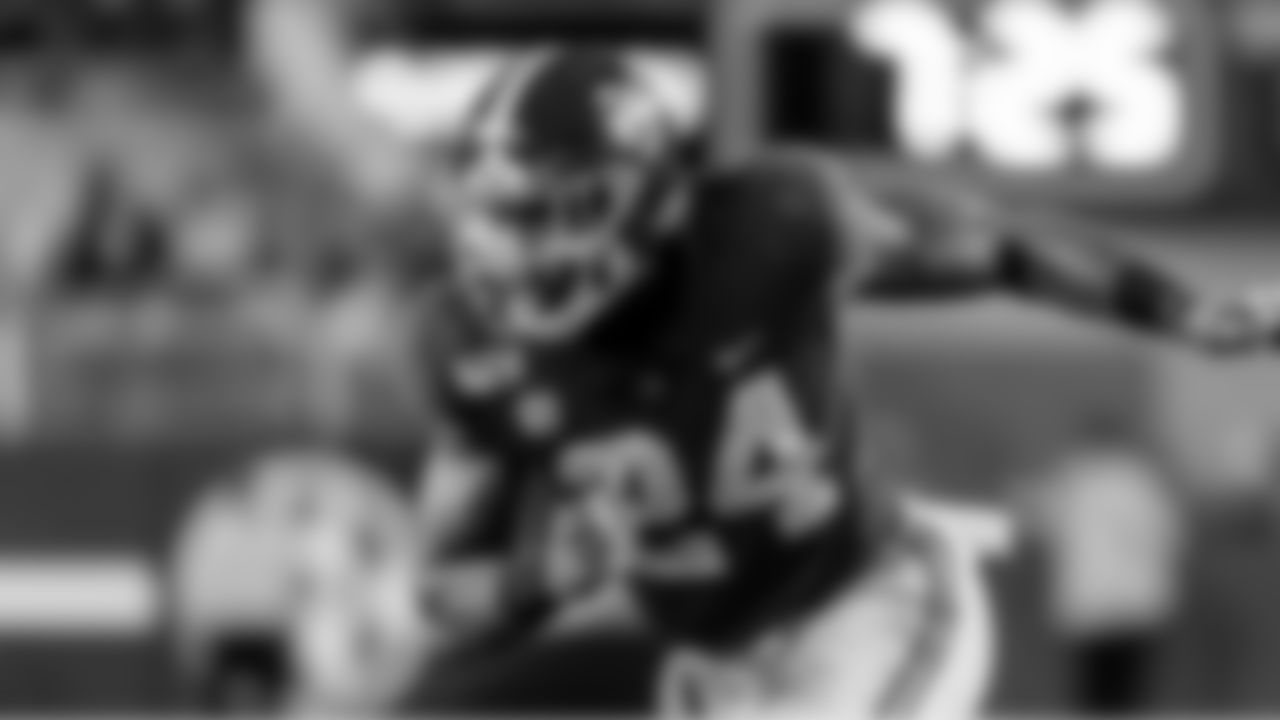
(28) E Terrell Lewis - Ravens
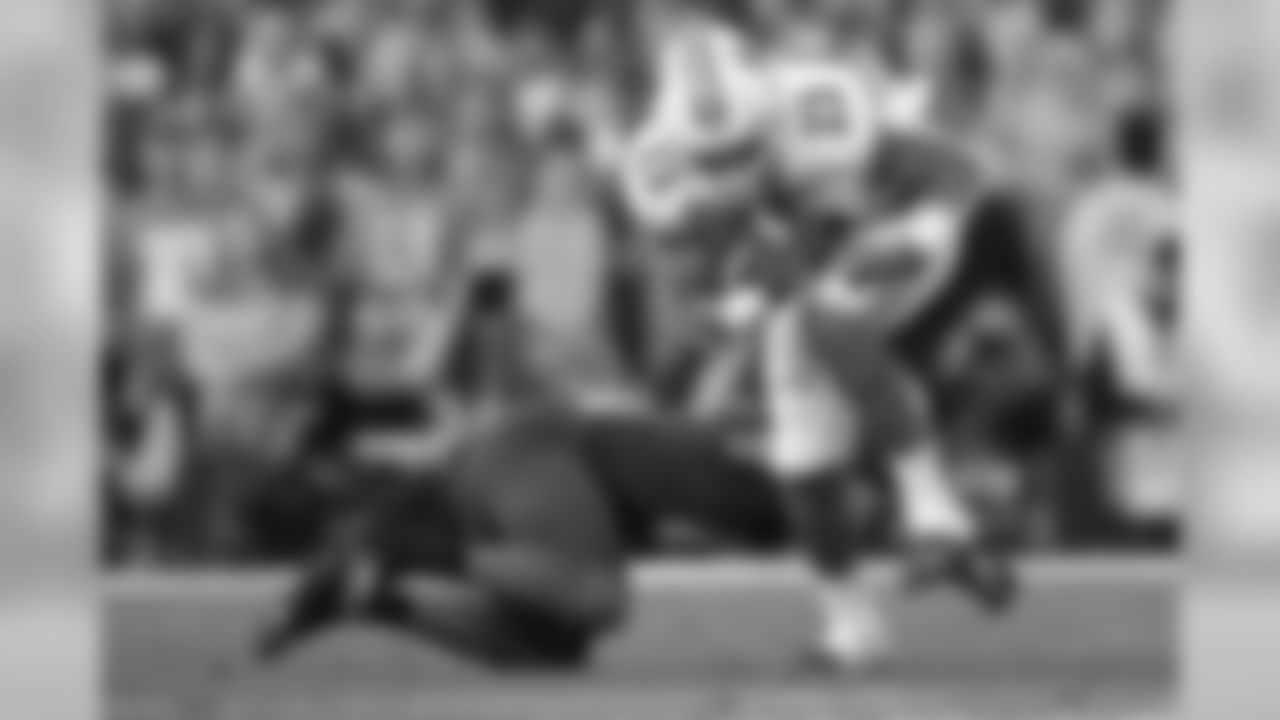
(29) RB Jonathan Taylor - Titans
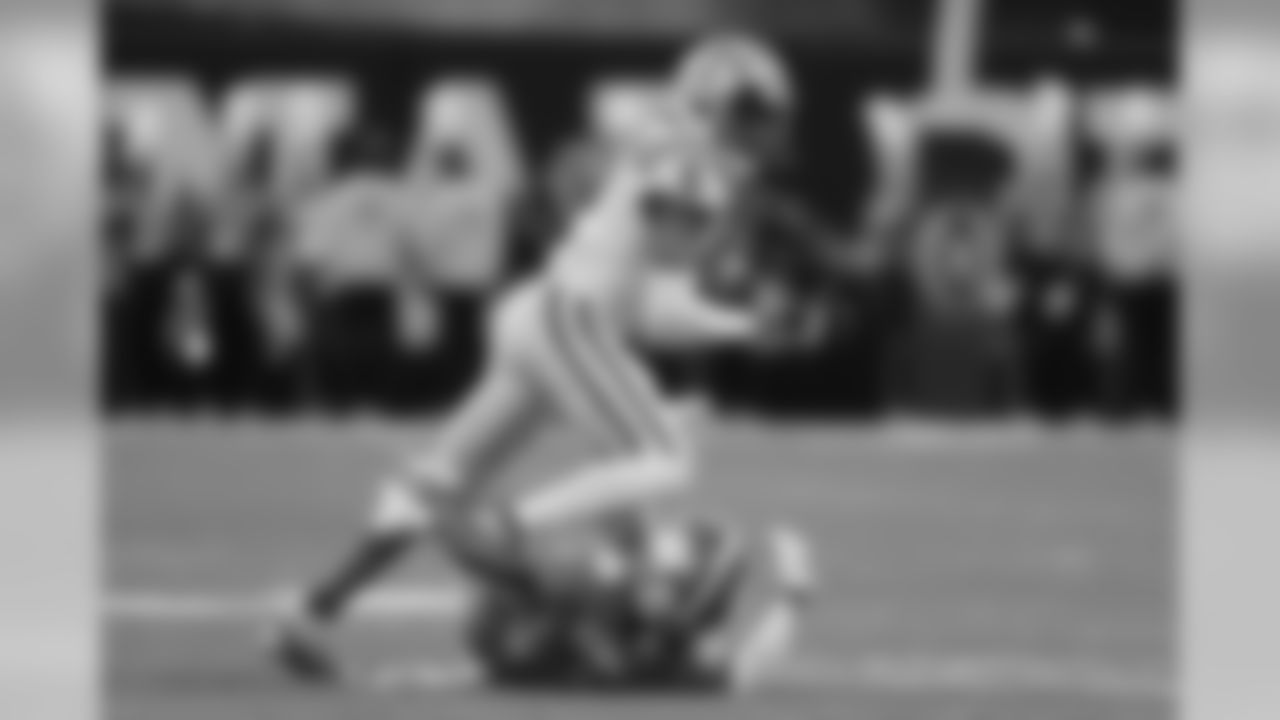
(30) WR Justin Jefferson - Packers
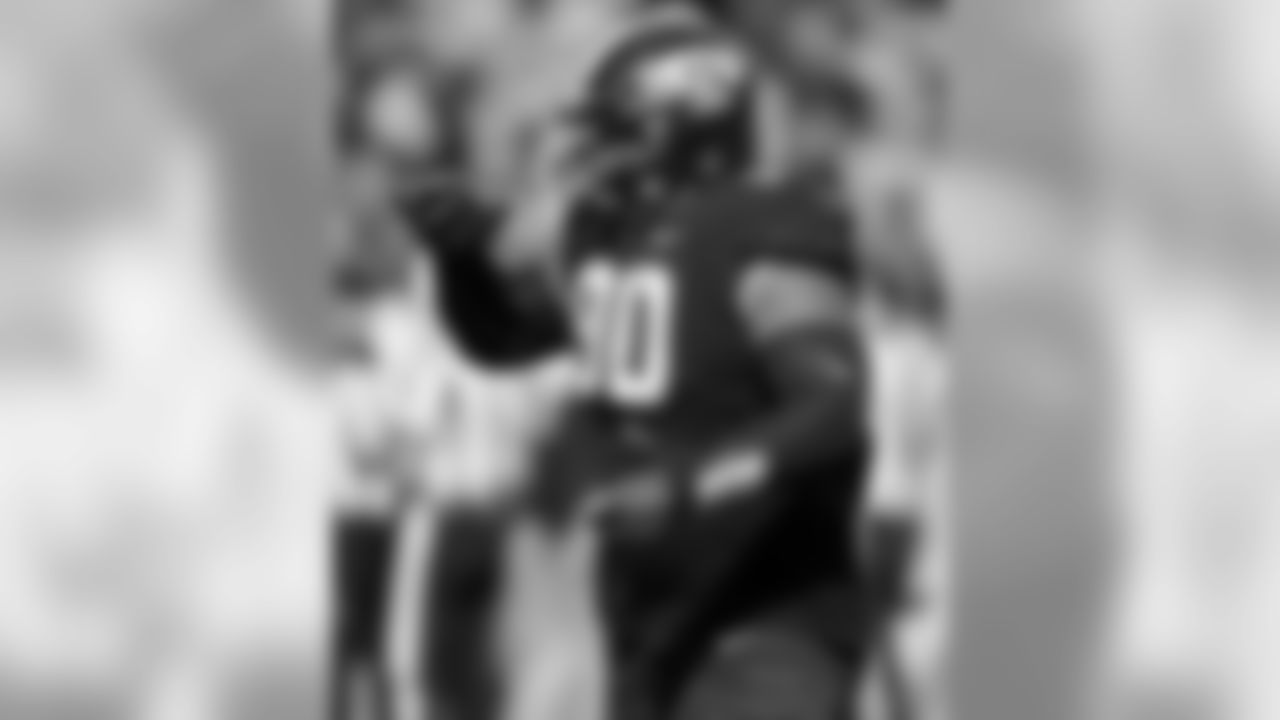
(31) DT Ross Blacklock - 49ers
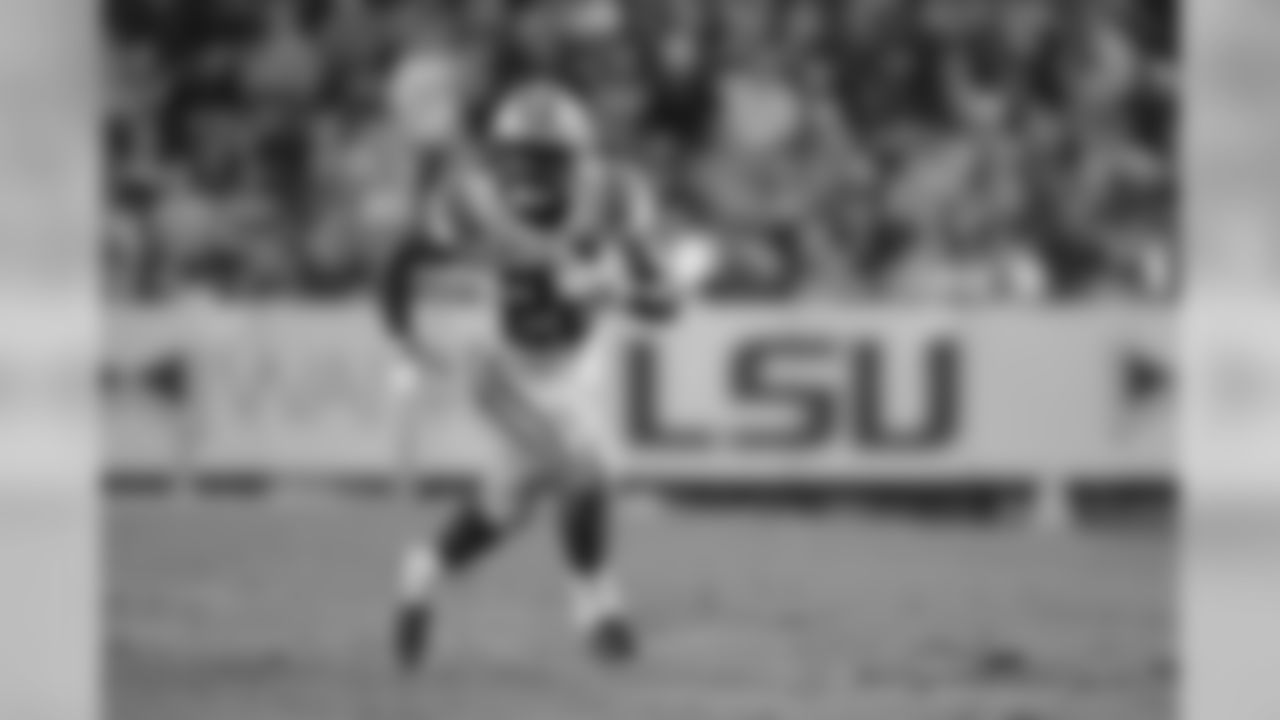
(32) RB Clyde Edwards-Helaire-Chiefs
That would seem to make Trapasso's proposal a significant overpay. If #14 plus #45 is already pretty fair, throwing in a sixth and – most importantly – a second-rounder next seems like overkill.
Meanwhile, Hanson's deal is a little more palatable, as the Bucs would retain their second-rounder this season, which could be a great spot to land a pass-catching running back or a third receiver for Brady. It's pretty close to fair according to the draft value charts, too. The 14th and 76th picks add up to 1,310 points, while the seventh pick is valued at 1,350. That's probably why Hanson has the Bucs throw in a 2021 third-rounder; if we take the 16th pick of that round it's valued at 190 points, which puts the whole return for the Jaguars at 1,500 points. The Stuart chart has the deal as a slight overpay with just the 2020 picks and a pretty large overpay when the 2021 selection is thrown in.
Those three analysts did a pretty good job of concocting possible trade scenarios, but of course they won't be on either end of the call if a swap is being discussed on the evening of April 23. Neither will I. But there are some historical precedents we can consider, as well.
The first NFL draft was in 1939. That's far enough back that the 14th pick was in the second round and in 1940 the player drafted 14th overall was nicknamed "Tarzan." In the 81 drafts since, a team has traded up from exactly the 14th pick to exactly the seventh pick exactly one time. That was in 1985, when Green Bay moved up to grab, appropriately, tackle Ken Ruettgers (a good move). The cost was a second-round pick, 42nd overall, with the Packers sending a fourth-rounder back to Buffalo.
That was before Johnson and the Dallas Cowboys devised their trade value chart, which eventually became a widespread tool. Still, it's instructive: Such a move cost a mid-second round pick.
There are plenty of other similar deals, say, ones involving picks in the 7-10 range going for picks in the 12-15 range. Two stand out as particularly close to our current analysis:
1. In 2012, Dallas traded up from the 14th pick to the sixth pick, and the cost was not only a mid-second round pick but exactly the pick the Bucs currently own in Round Two, number 45.
2. In 1986, San Diego moved up from the 14th pick to eighth pick. They gave up a 2nd-round pick, 44th overall, but also sent back a third-rounder (#66) to Minnesota.
There is also a very similar deal to the one Hanson proposes above, with the Bucs moving up to the ninth pick with Jacksonville, instead of the seventh. That is 14 to 9; in 2000, Baltimore moved up from 15 to 10, sending a mid-second-round pick to Denver. Again, that happened to be exactly the 45th pick in the draft.
That said, just two years ago Arizona did the same thing, moving up from 15th to 10th to draft quarterback Josh Rosen. They did not give up a second-rounder, instead shipping picks in the third round (79th) and fifth round (152nd) to Oakland.
The Buccaneers have actually been on the other end of similar deals on a couple occasions. In 1997, they traded from the sixth pick down to 12th before drafting Warrick Dunn. They gained a third-round pick (63rd overall) from Seattle in the process. That actually seems like a pretty good price for the Seahawks, because just two years earlier Tampa Bay had extracted two second-round picks from Philly (43rd and 63rd) so the Eagles could move up from 12th to seventh.
Interestingly, that scenario practically repeated itself just two years ago. In the 2018 draft, General Manager Jason Licht sent the seventh-overall pick to Buffalo, moving down five spots to the 12th pick and gaining two second-round picks in the process (53rd and 56th).
Obviously, there are plenty of other factors involved beyond the numbers on the trade value chart. How desperate is the team trying to trade up? Is there a quarterback involved? Could a deal involve active players, like Philadelphia shipping Kiko Alonso and Byron Maxwell to Miami in 2016 to move up from 13th to eighth.
Still, the preponderance of evidence suggests this: To move up from 14th to somewhere in the range of the seventh pick, the Buccaneers would probably have to dangle their second-round pick, or something equivalent (perhaps picks in future drafts). They might be able to make a smaller move to the range of the ninth or 10th overall pick, but even that would probably cost their third-round pick. The obvious question: Is it worth it?





















